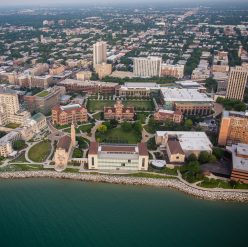The Rev. James J. Mertz, S.J.: 1909-1963
The Rev. James J. Mertz, S.J., was born on May 24, 1882. From 1918 to 1922, Mertz taught at St. Ignatius High School, which was Loyola University’s first campus on the west side of Chicago on Roosevelt Road. In 1922, Mertz moved to a teaching position at the College of Arts and Sciences campus in Rogers Park. The lakeshore property was purchased in 1905, with Loyola Academy beginning classes in 1909 and university classes starting in 1912. Loyola’s College of Arts and Sciences has remained at the same campus ever since. During his tenure at Loyola, Mertz was known primarily for his efforts in raising nearly one million dollars (from 1924 to 1939) to pay for the construction of Madonna della Strada chapel. He taught at the university until 1972. Even after retiring at age 90, Mertz continued to work in the Loyola University Archives and Special Collections. Rev. Mertz died in 1979. [2]
Mertz’s change in campus location did not correspond with the first building opening on the Lake Shore Campus. Dumbach Hall, completed in 1909, was established as a boy’s high school. Three years later, Cudahy Science Hall was completed, standing next to the southern entrance of Dumbach. For the first decade of the campus’s history, these were the only two buildings on campus. The neighborhood of Rogers Park was a sparse, suburban community at the time. Those who were familiar with this northern neighborhood “recalled that the area around Devon and Sheridan consisted mainly of dunes and scrub oaks.” [3] Construction on the Jesuit Residence finished in 1922. Chicago Jesuits, as well as Jesuit professors at Loyola, resided in this building for the next eight decades. With the need for a larger athletic space, Alumni Gym was completed in 1922. The facility housed a pool and basketball court, and hosted the National Catholic Interscholastic Basketball Tournament from 1924-1941. [4] By 1925, Rogers Park started to become populated, growing from roughly 7,000 residents in 1910 to 27,000 in 1930. [5] Chicago residents gradually moved north, turning Chicago’s rural northside into a metropolitan neighborhood.


Pictured in the foreground is the foundation of the Wheeler House, now known as Piper Hall. In the background, Dumbach Hall can be seen under construction in 1909. [6]
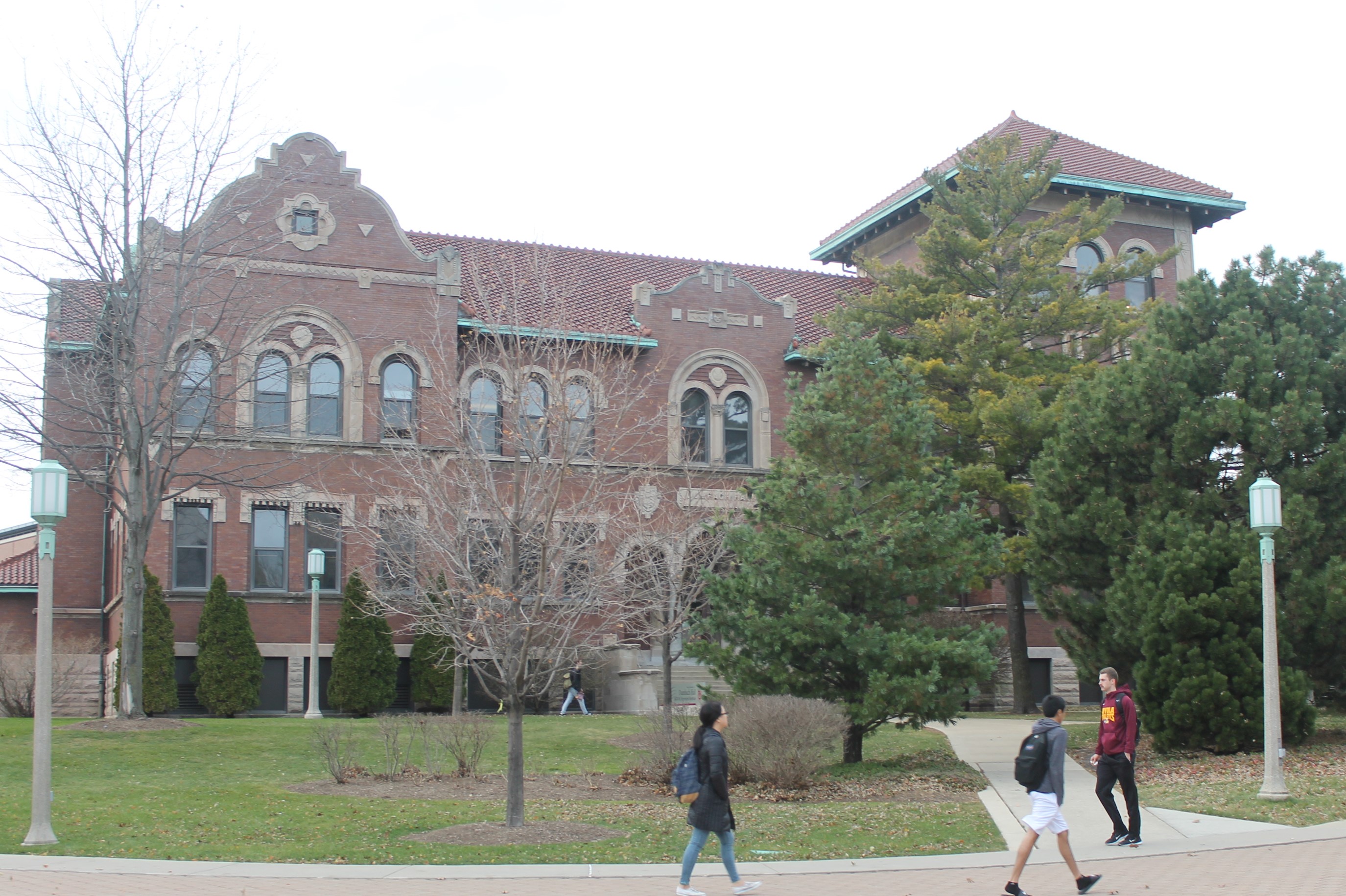

The front of Dumbach Hall, photo date is unknown. Note the sparseness of foliage in front of the building, as well as the stairs leading down to the roundabout. [7]
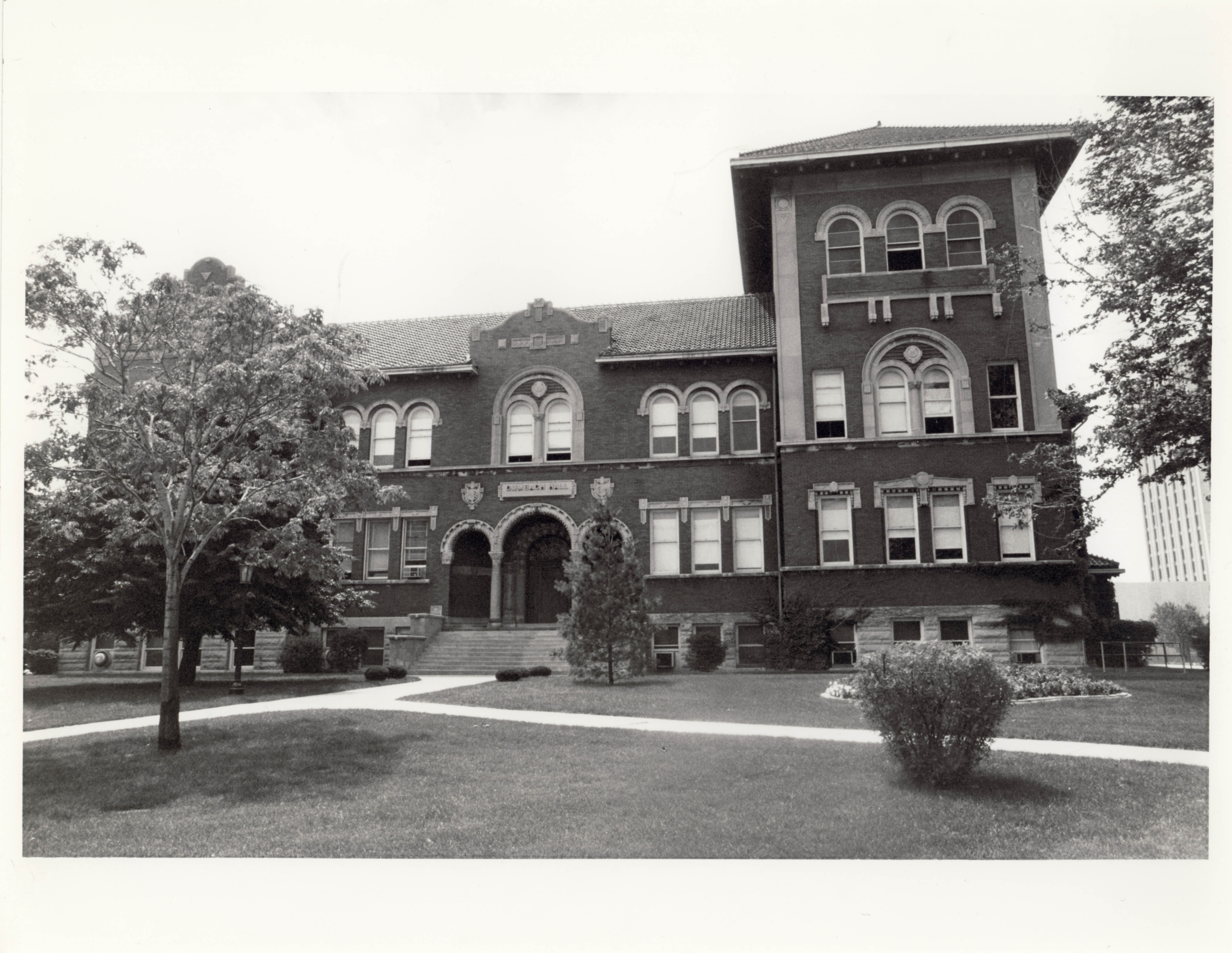
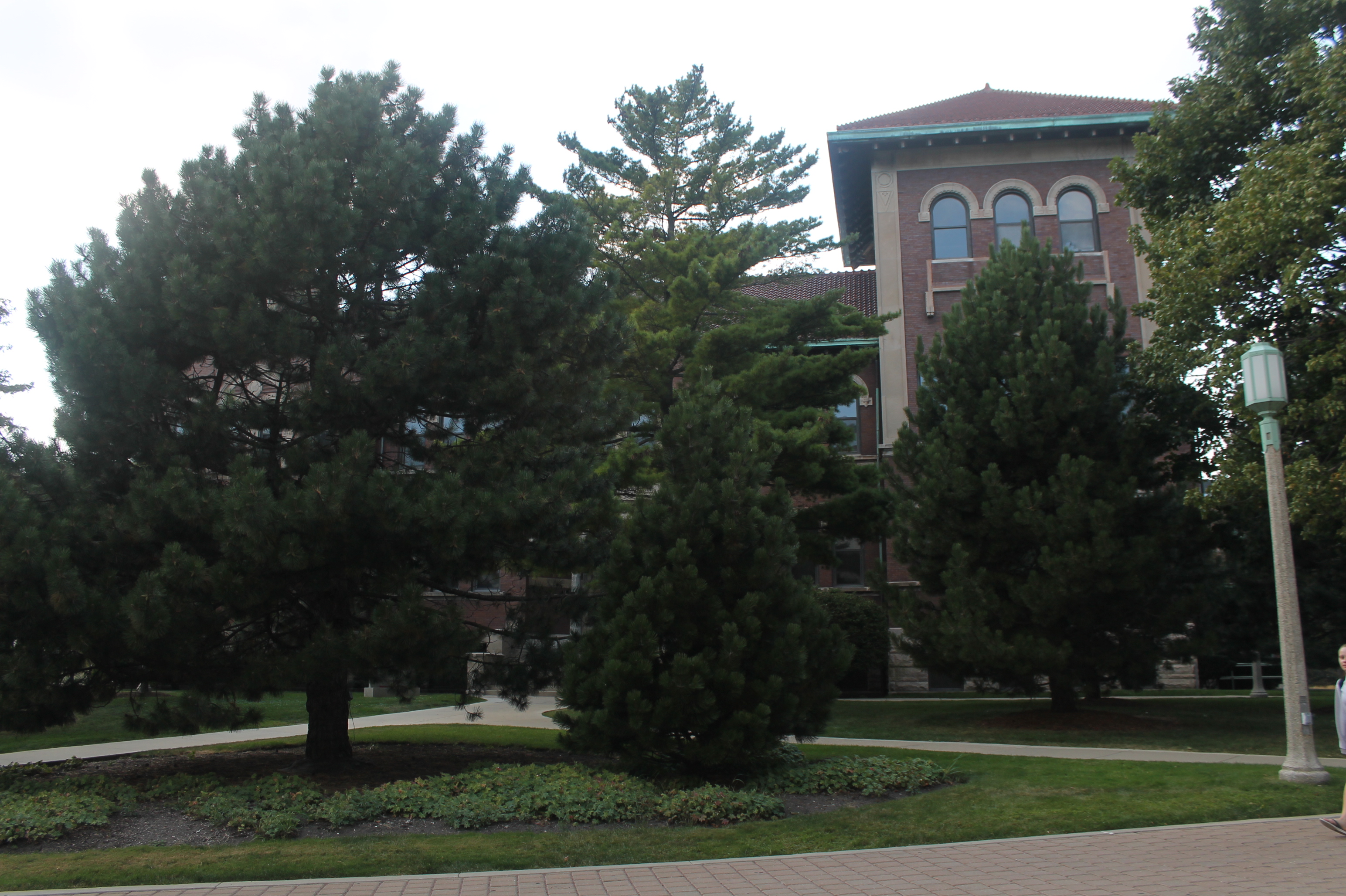
Dumbach Hall from an eastern angle. The photo may be dated circa 1970. [8]

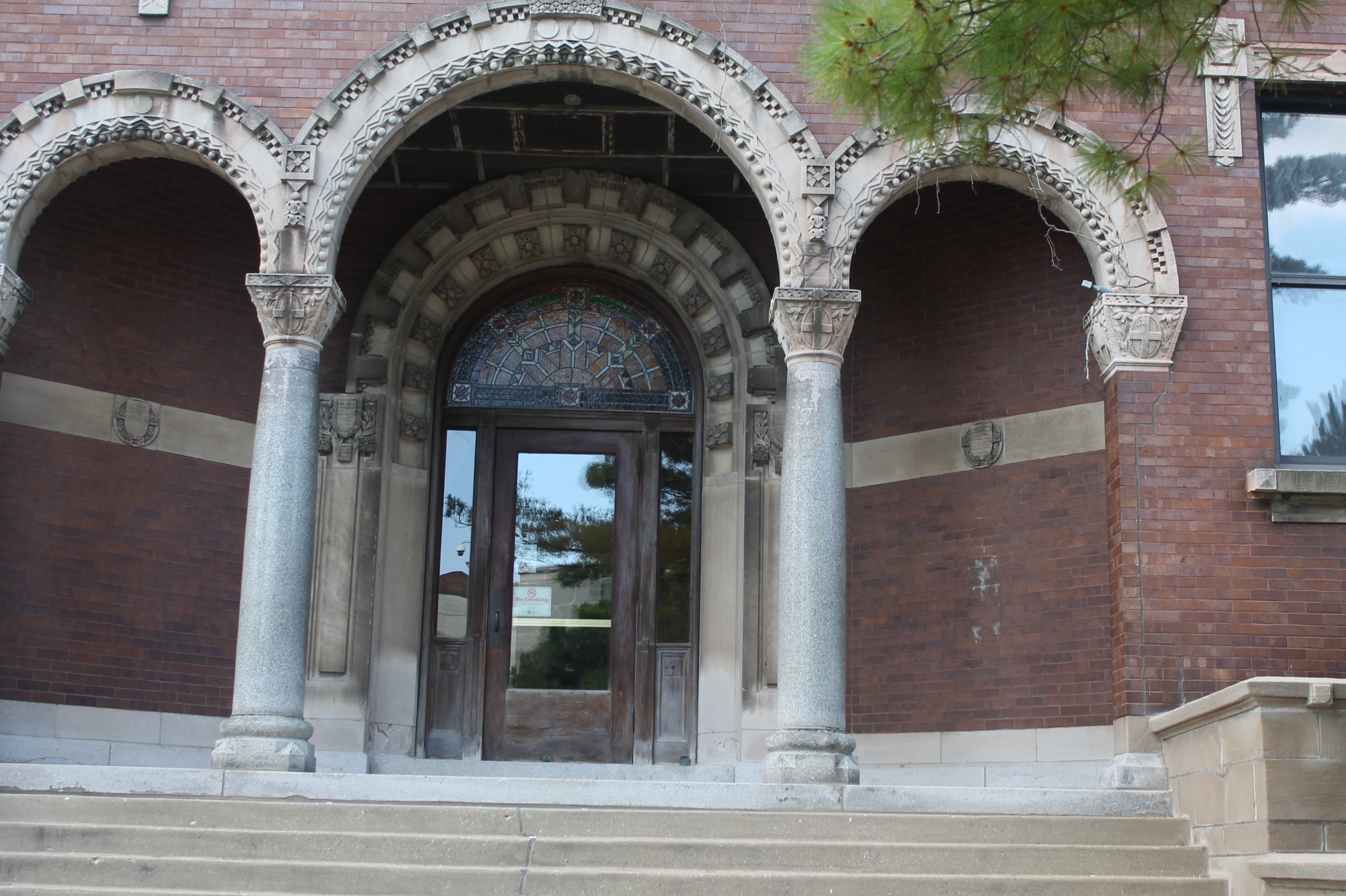
Students exiting Dumbach Hall. [9]

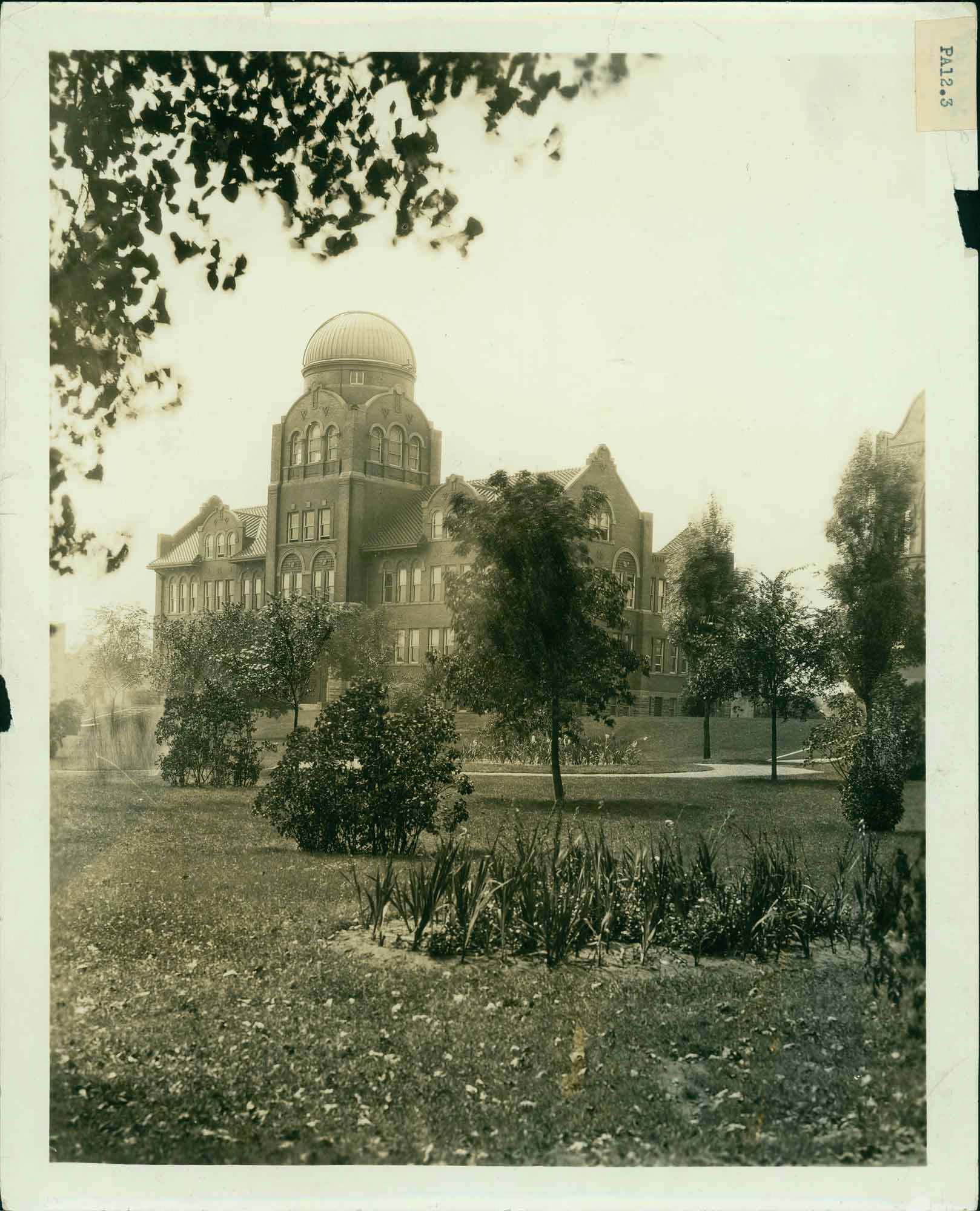
A view of Cudahy Science Hall in 1929 from what is now the Cudahy Library expansion. [10]
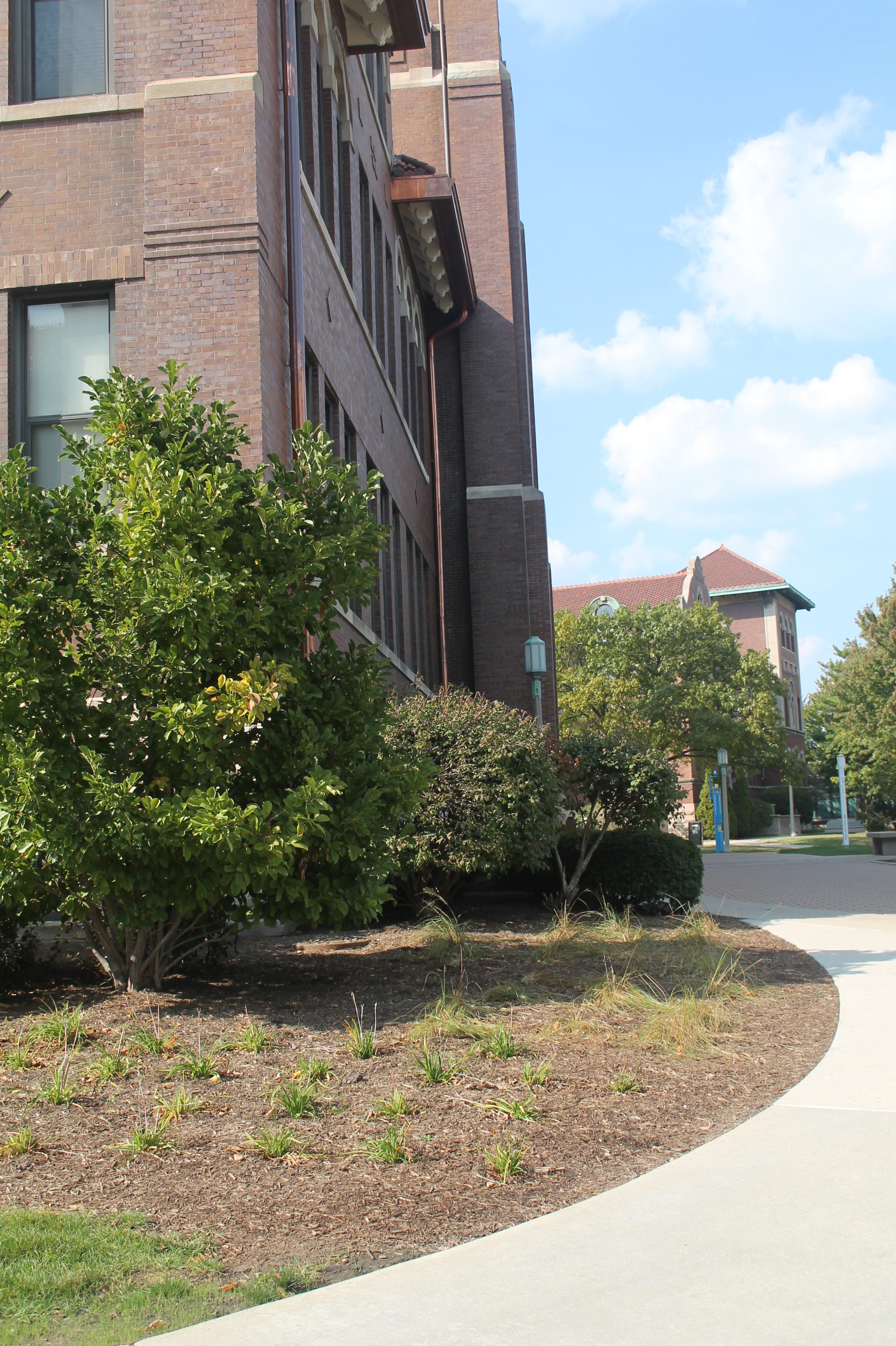

A 1961 photo of students leaving Cudahy Science Hall. The stairs in the photo no longer exist, and the ground has since been leveled. [11]

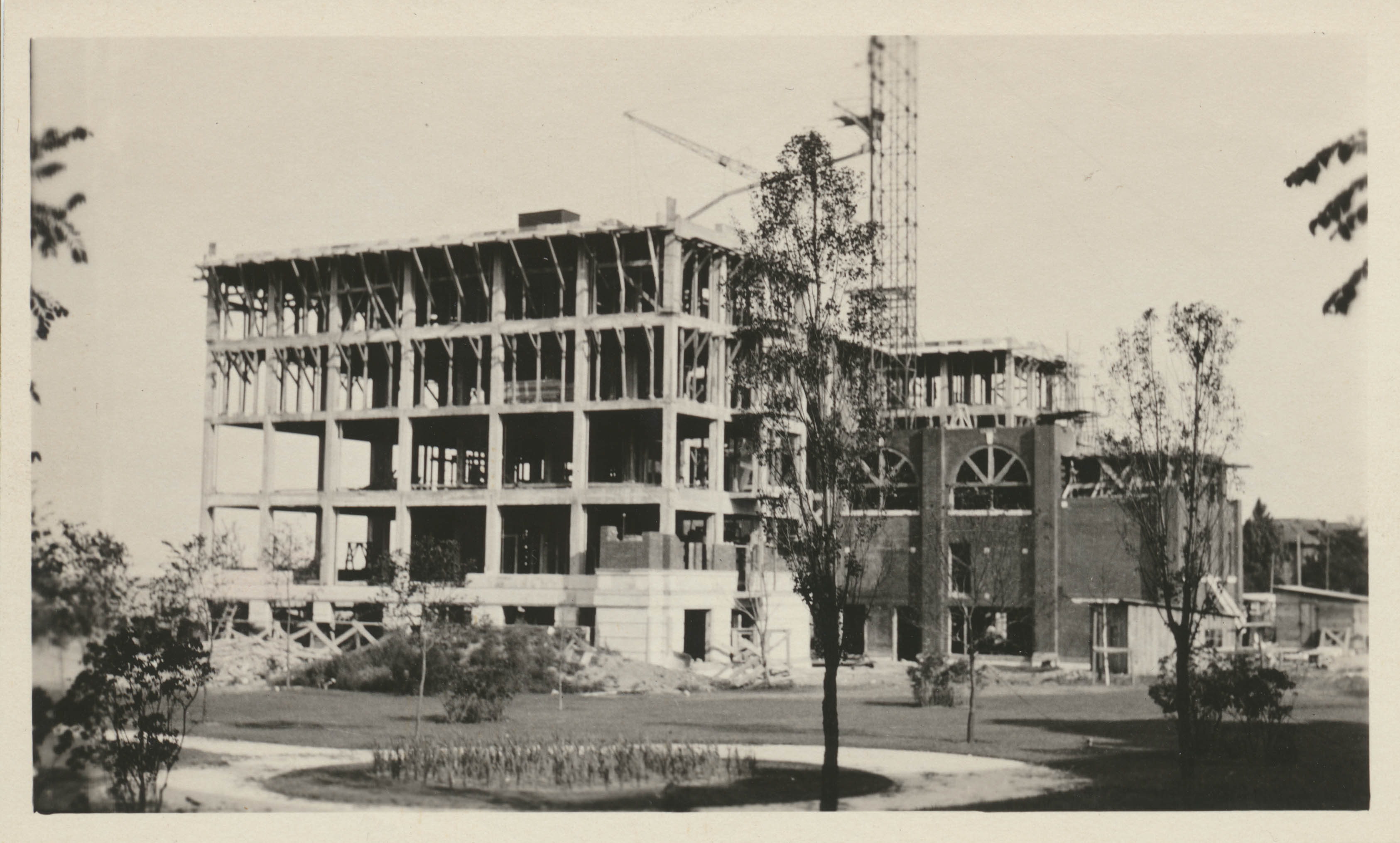
Here is the Jesuit Residence under construction in 1922, with the photographer standing in front of Dumbach Hall. [12]
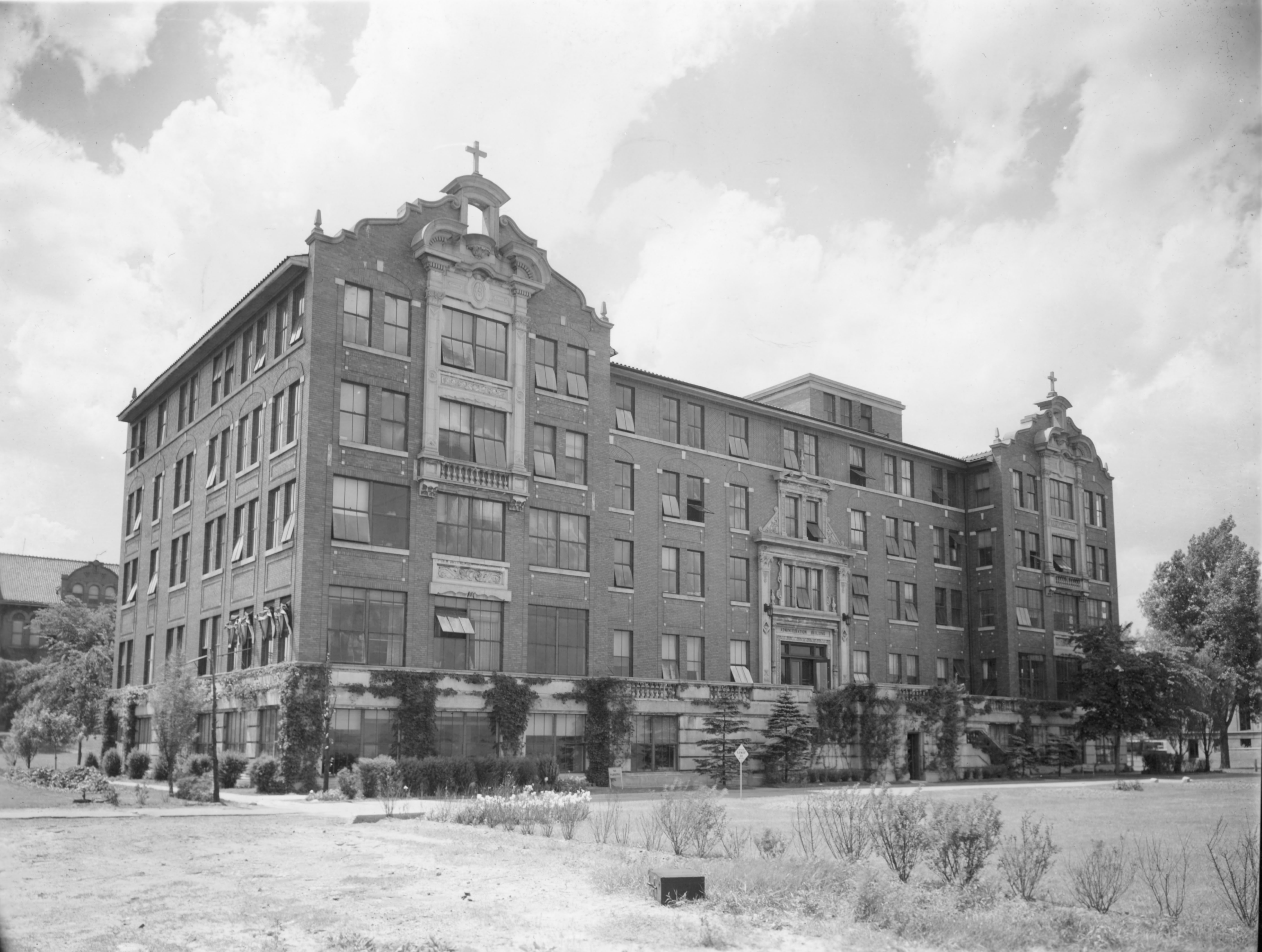

The Jesuit Residence, pre-1960, on what is presently the East Quad on the Lakeshore Campus. The “Jes Res” was demolished in 2011. [13]
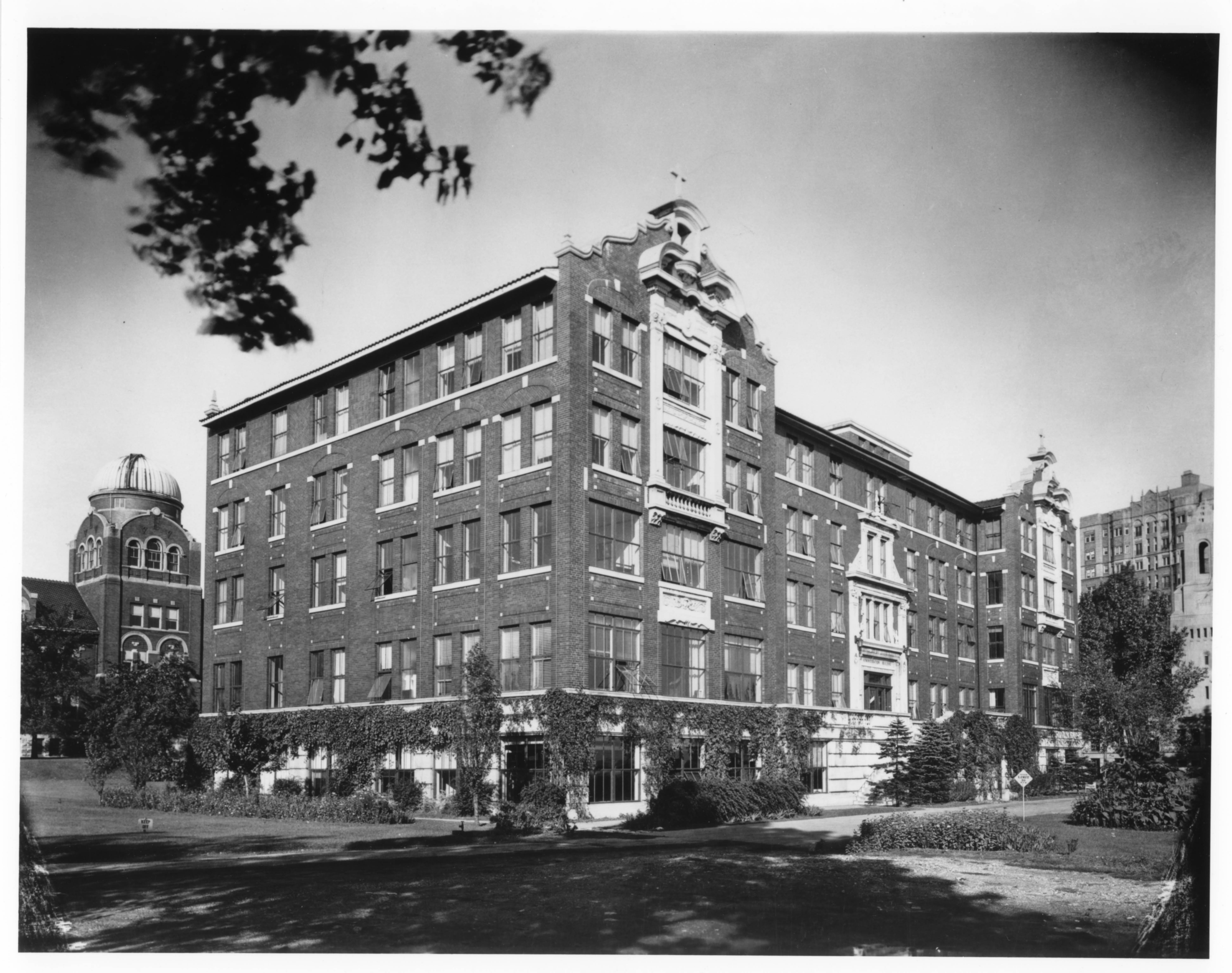
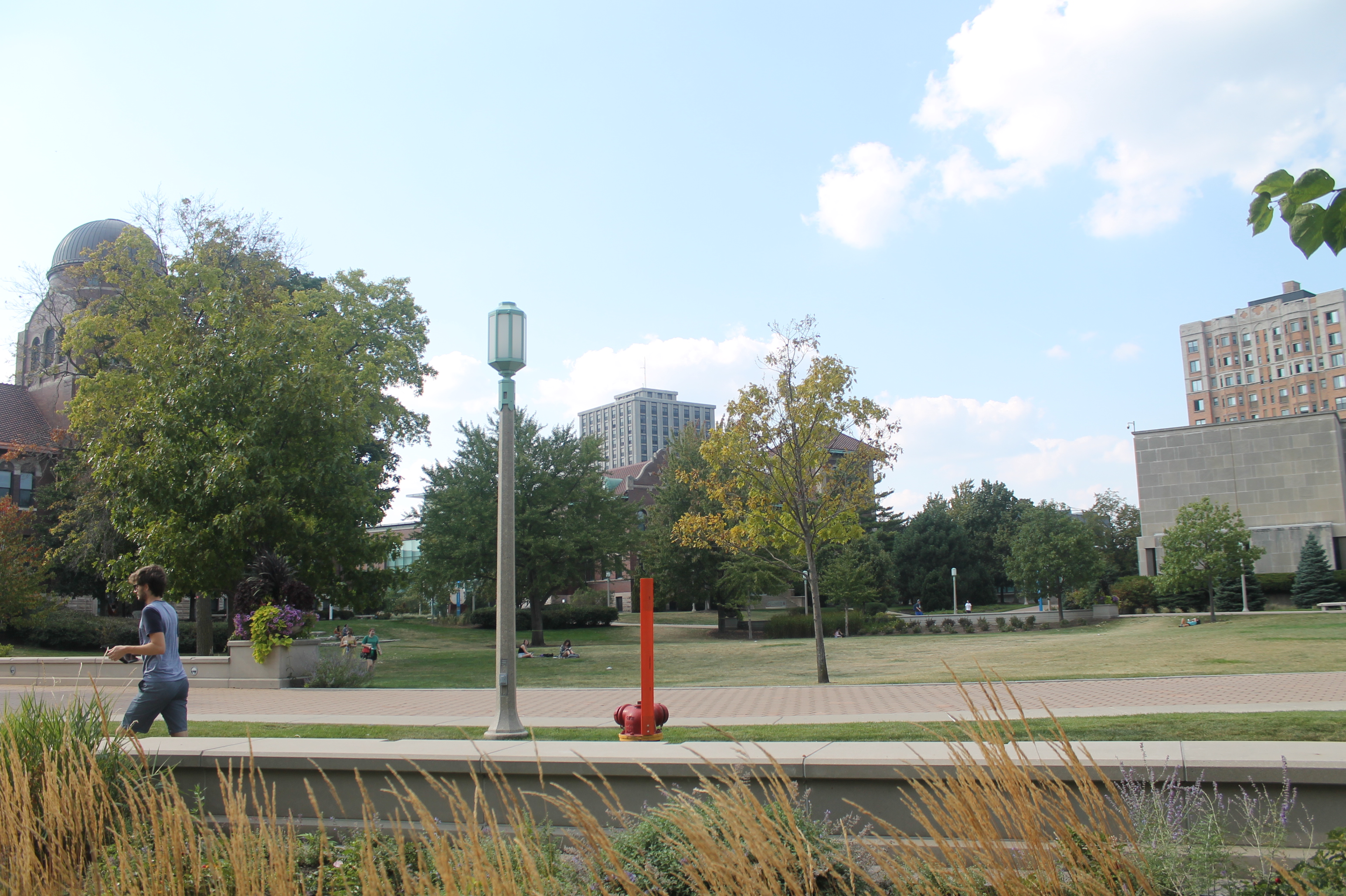
Another photo of the Jesuit Residence exterior before it was re-faced. [14]


The exterior of the Jesuit Residence after it was re-faced, circa 1960s. [15]
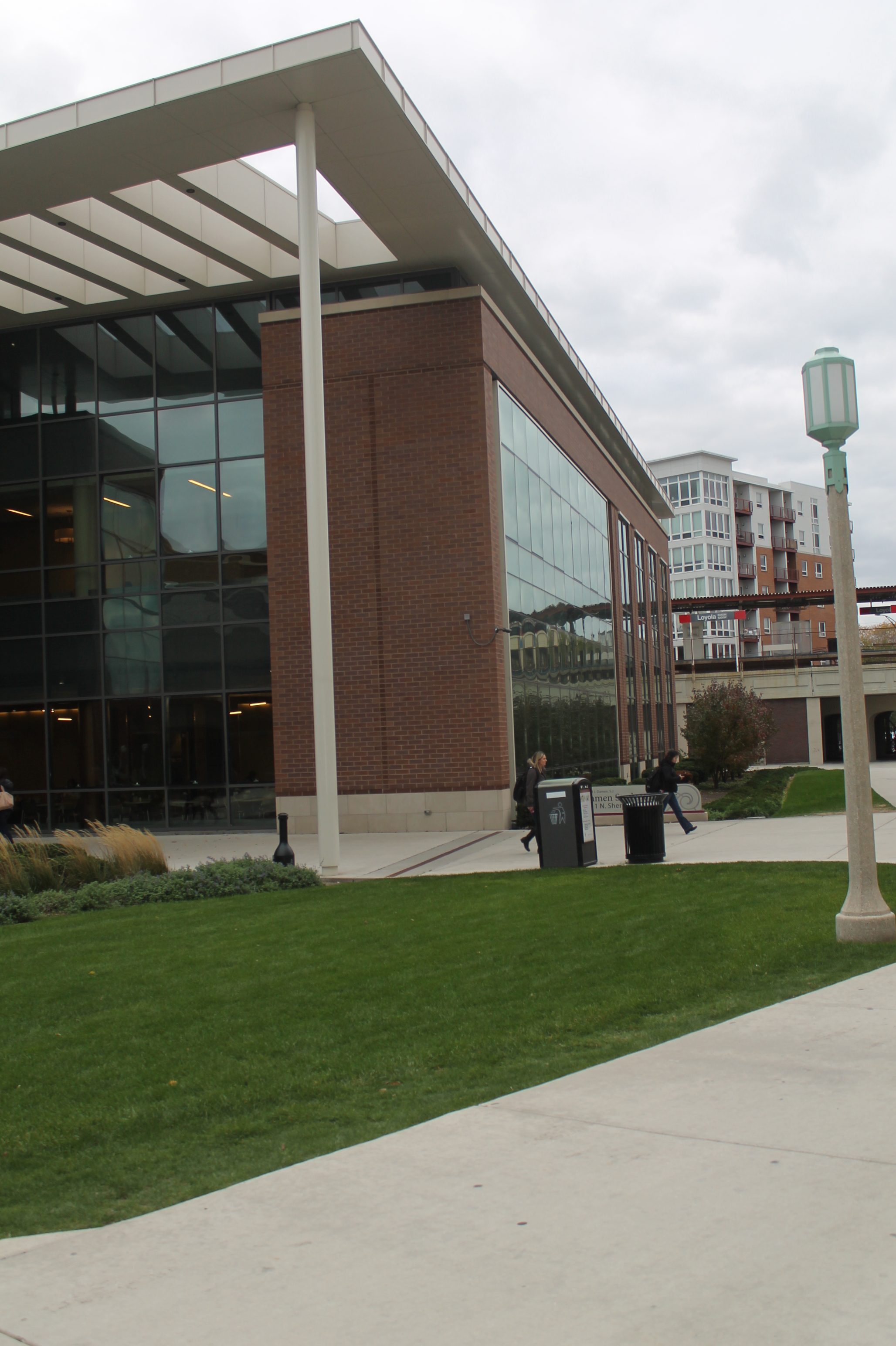
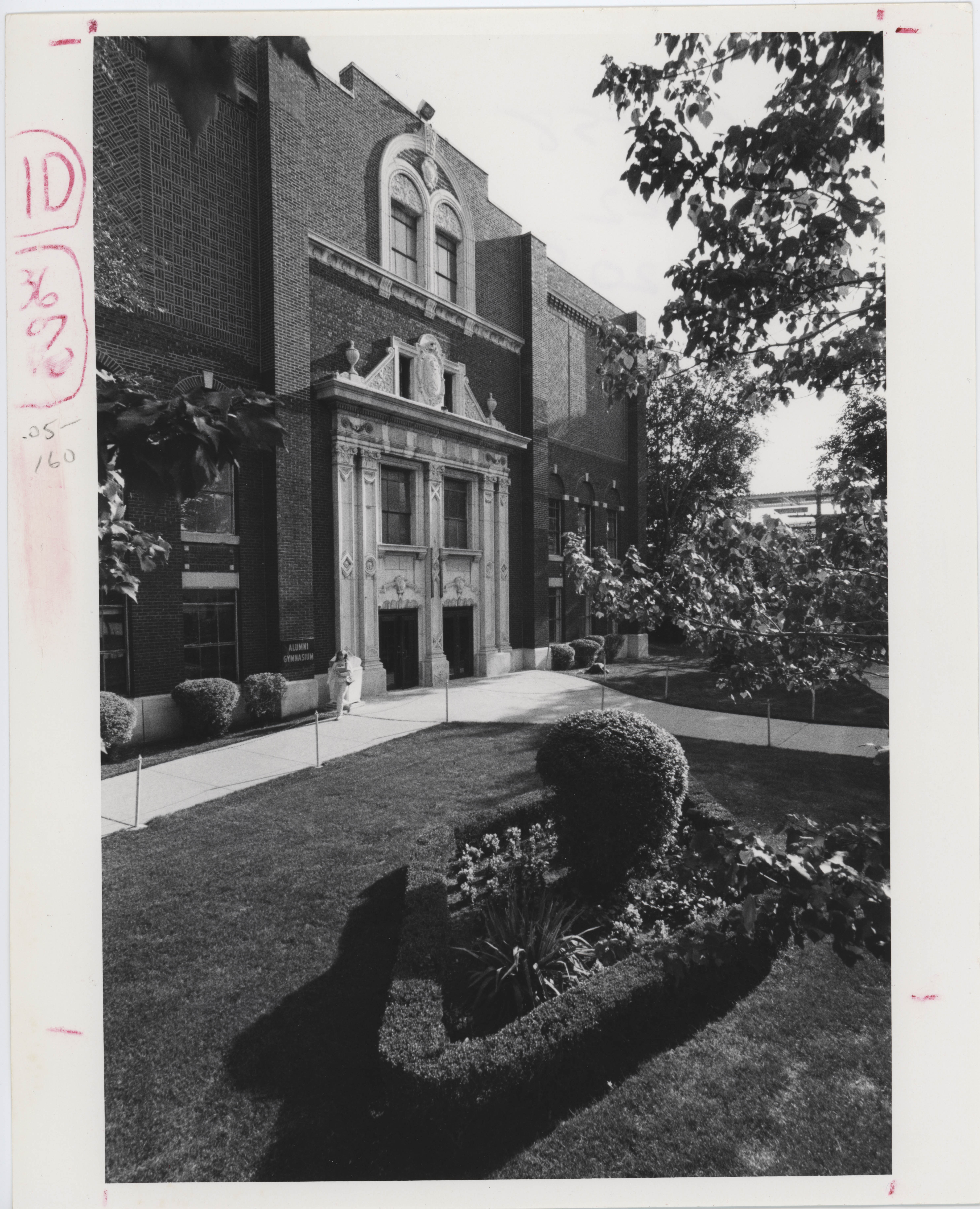
A photo of the entrance to Alumni Gym, which stood where the Damen Student Center is today. [16]

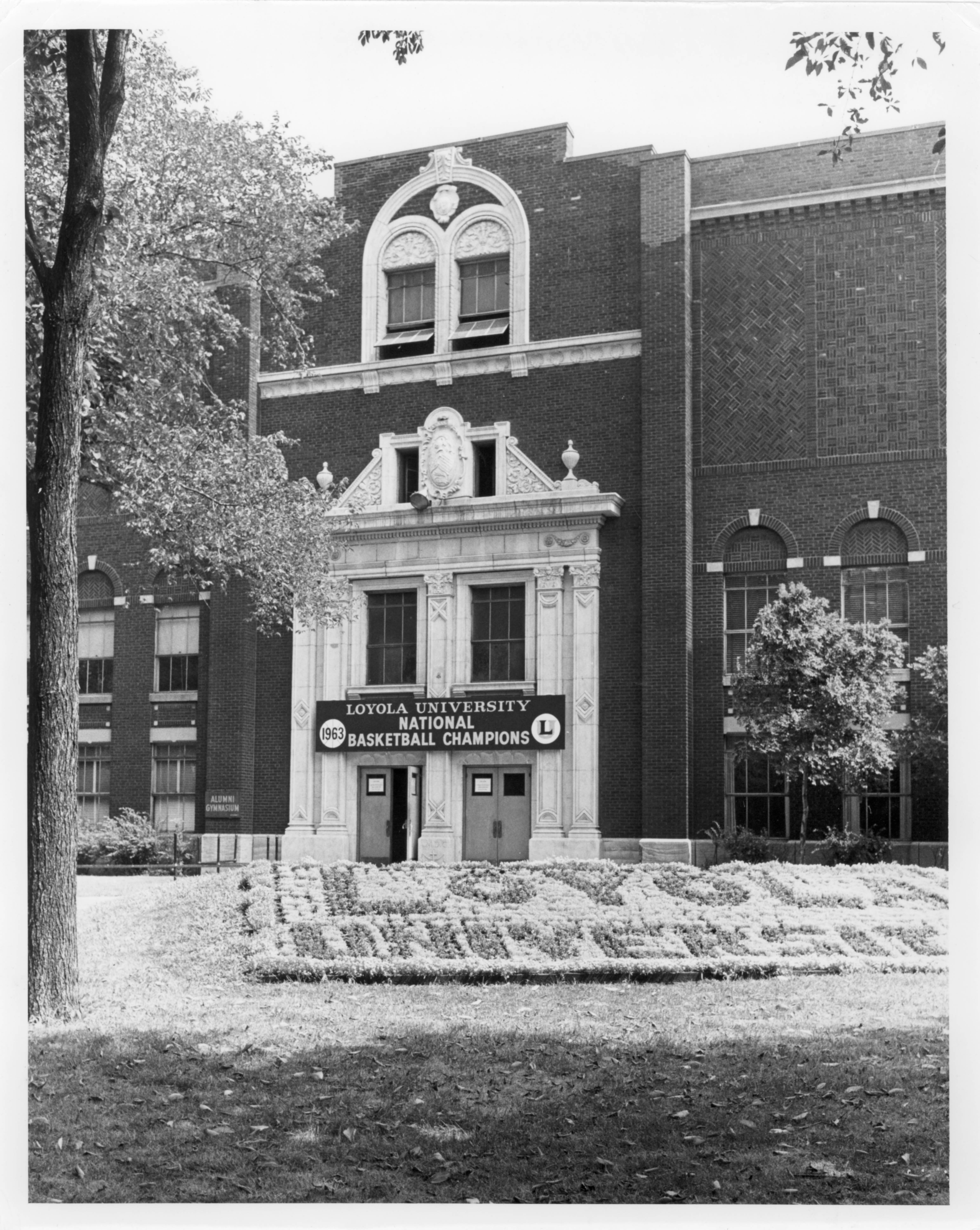
Here is a photograph of Alumni Gym in 1963 after the Ramblers won the NCAA championship. [17]
Three of Loyola’s main buildings laid the groundwork for fulfilling the architect’s original dream for the physical campus. During the 1920s and the Great Depression, the Rev. Mertz undertook a large task: raising money for the construction of Madonna della Strada over fifteen years. Mertz received money as early as 1926, publishing newsletters to advertise the fund. By the end of 1927, he had raised approximately $46,000. [18] Once he collected $750,000, groundbreaking began near the lakefront, south of the Jesuit Residence. The cornerstone was laid on October 30, 1938, but the chapel was not completed until the 1940s. In the same year, the Cudahy Memorial Library was dedicated. Additionally, in 1930, Mundelein College for women opened. Mundelein later merged with Loyola University in 1991.

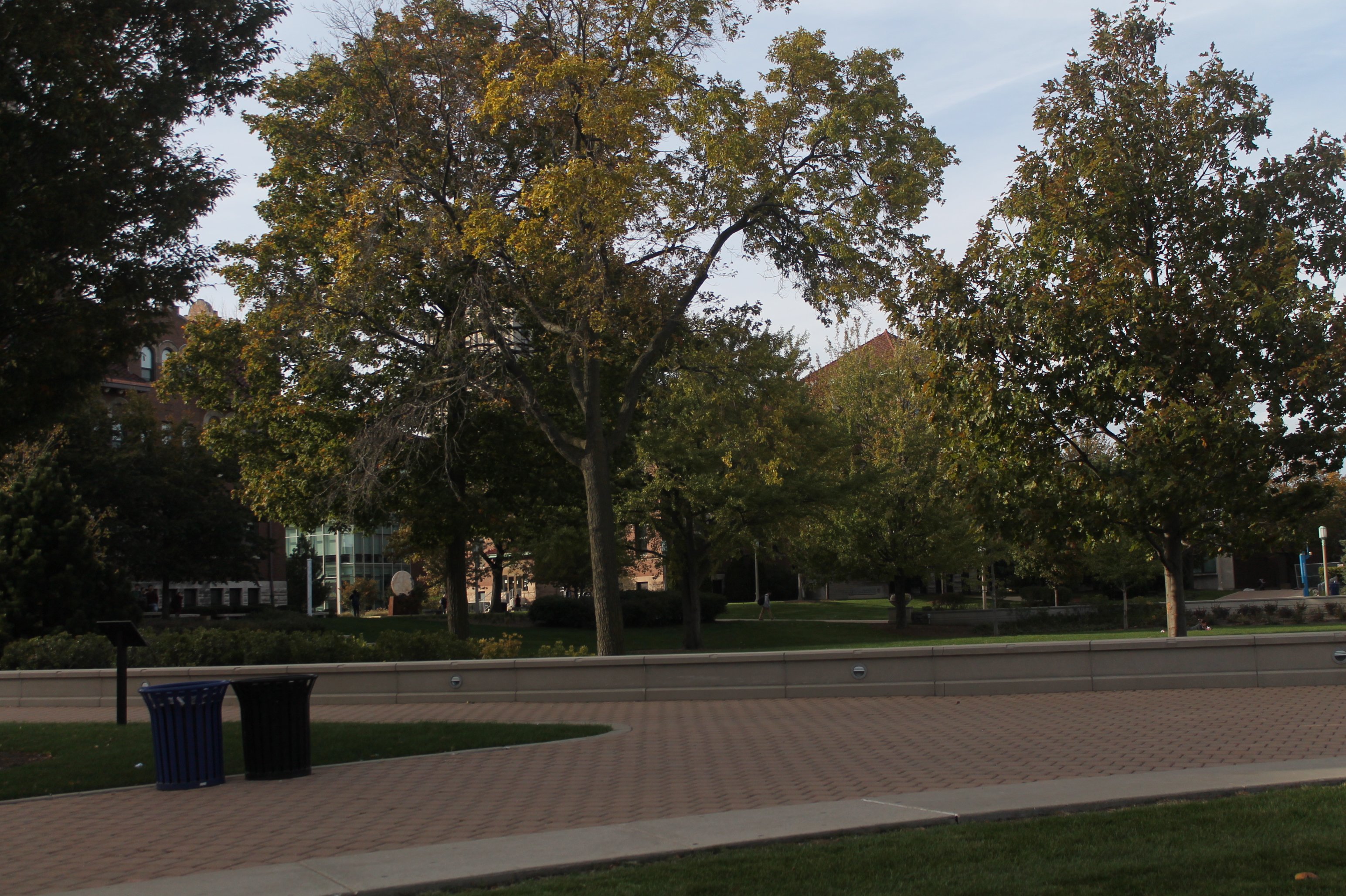
The groundbreaking of Madonna della Strada on June 6, 1938. Rev. Mertz is holding the shovel full of dirt. [19]
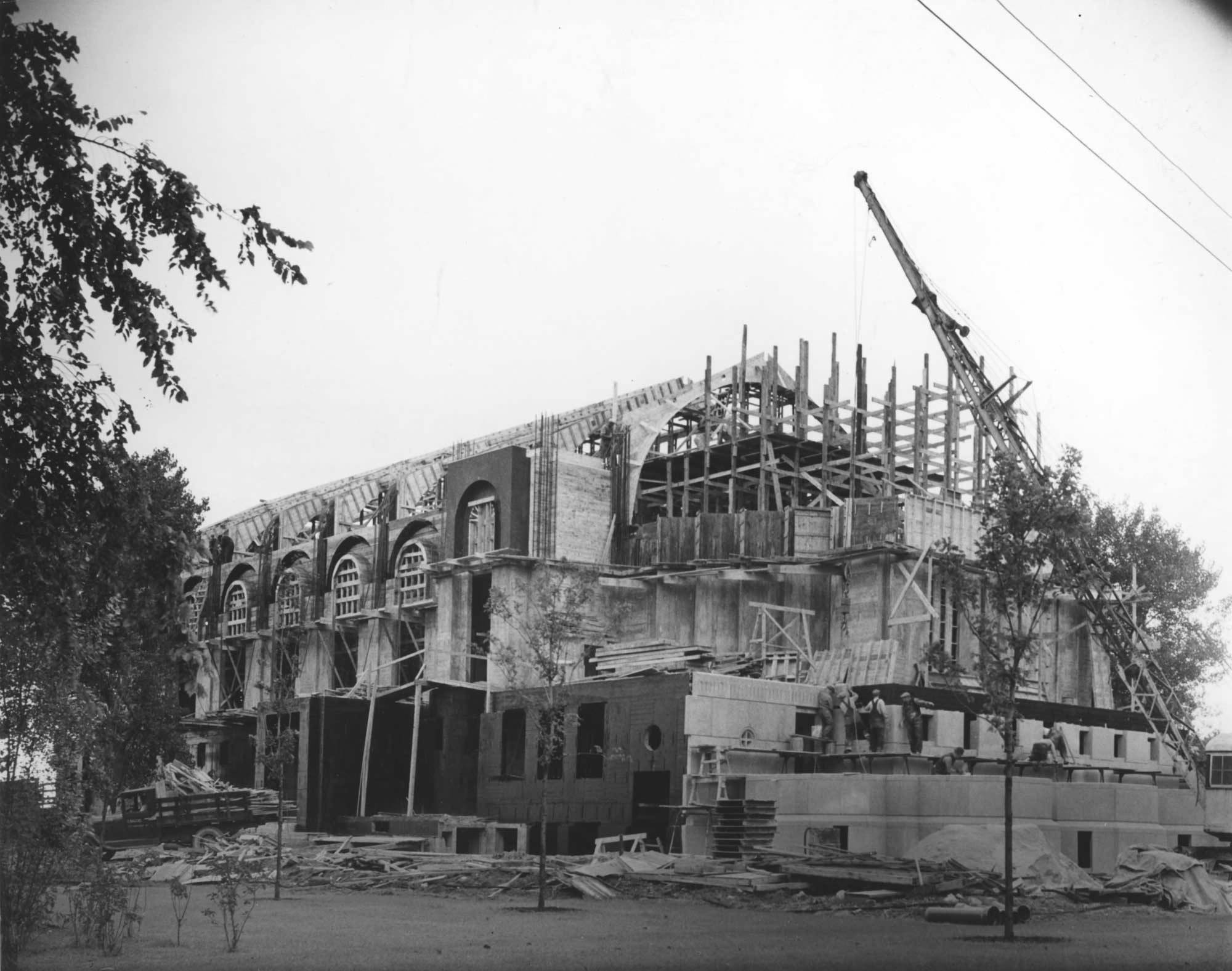

A rare photo from 1938 to 1940 when Madonna della Strada was under construction. The view is now obstructed by trees. [20]
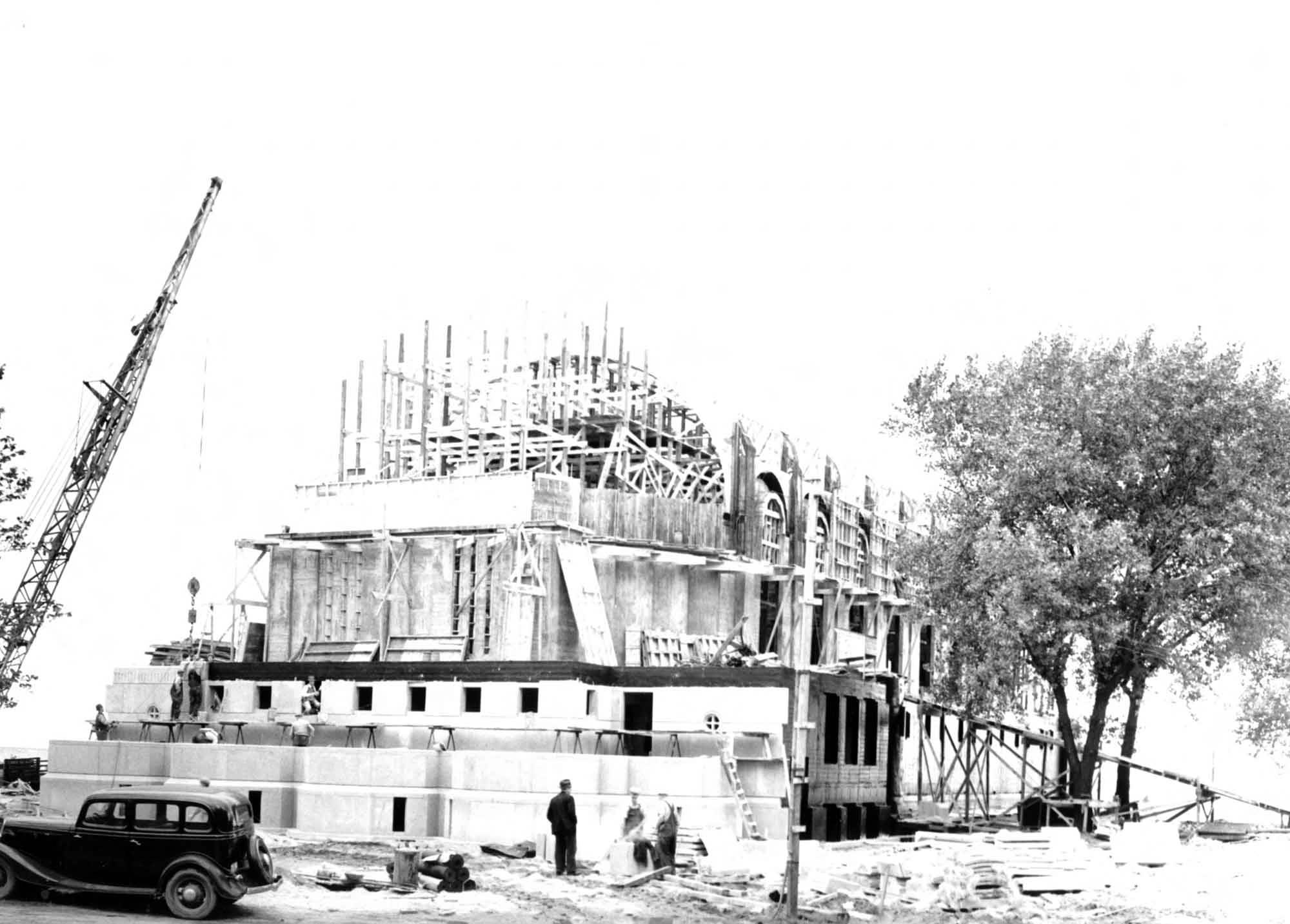
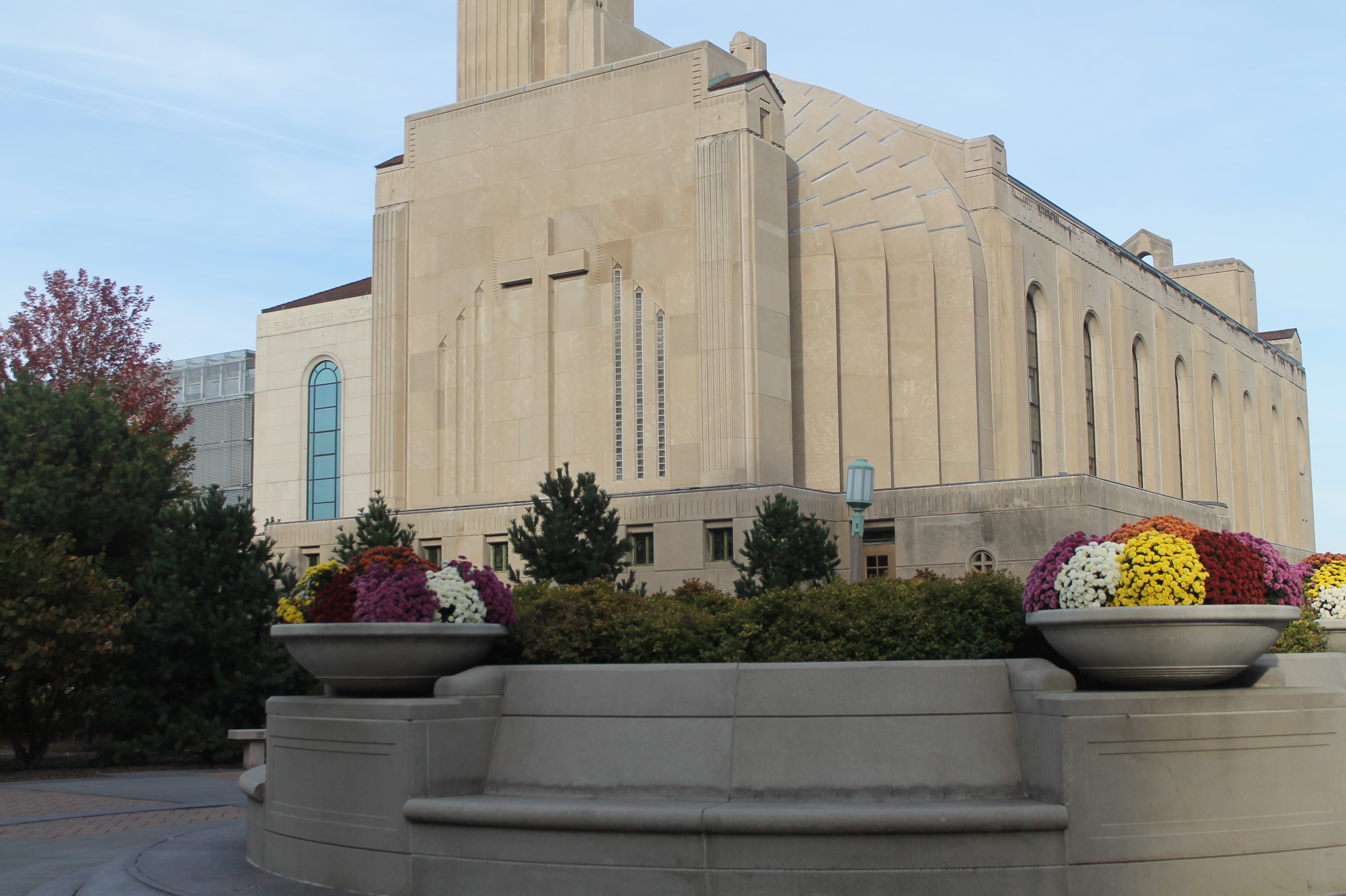
A photo of Madonna della Strada under construction between 1938 and 1940. [21]
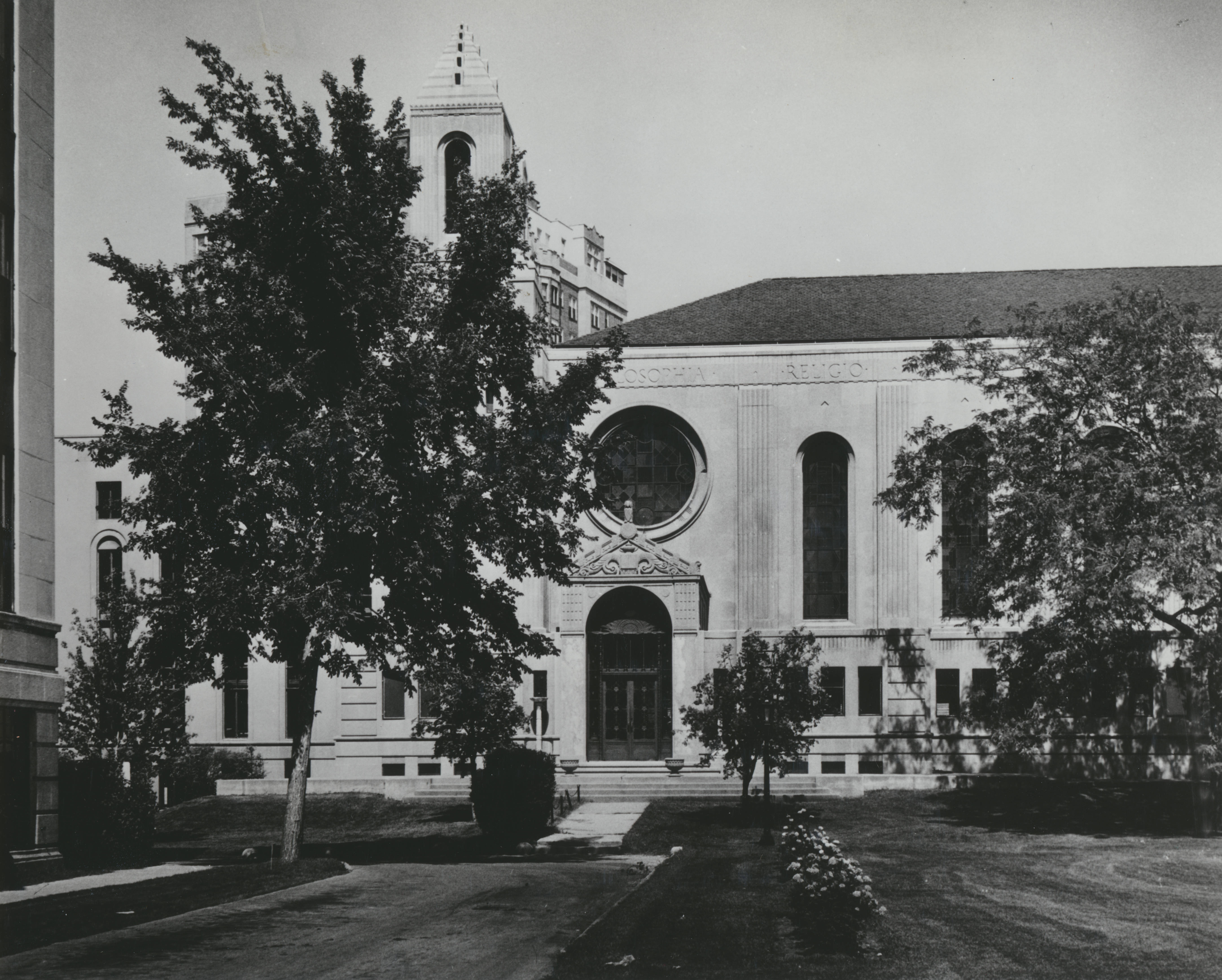

A view of Cudahy Library looking north from the 1950s. The Jesuit Residence can be seen on the left edge of the photo. [22]
During Mertz’s remaining decades at Loyola, more changes swept through the campus. World War II prompted Loyola to establish accelerated graduation programs, where as many as four commencement ceremonies were held every year to churn out graduates. [23] Many students volunteered for the war, as well. According to Kevin Herbert, a graduate of Loyola and student during the war, he and thirty other Loyola students started out as aviation cadets. [24] Recreational activities such as school dances were eliminated, and the Loyola News stopped publishing from autumn of 1943 to October 1944 because “of a lack of news and a lack of students interested in the paper.” [25] Madonna della Strada’s exterior was completed in 1940. Mertz’s work during nearly two decades was almost finished. In the next decade, the interior of Madonna della Strada was completed, including the stained-glass windows.
Beginning in 1930, the school year began with freshman and sophomores playing Push Ball for the Brown Barrel. This competition was held annually, with the losers jumping into Lake Michigan. [26] A men’s residence, opened as Loyola Hall in 1955, but is now named Campion Hall. Two new women’s residences were opened on the northern end of campus: Stebler (1960) and Chamberlain Halls (1962). Popular pastimes for students also included football and the Loyola Fair. In 1966, Loyola University Chicago became co-ed. While women were previously allowed to enroll in the college, they could not reside on-campus until that year. Overseas, John Felice established Loyola’s study abroad program with a home campus in Rome, Italy in 1962. This campus is now known as the John Felice Rome Center. Finally, the Loyola men’s basketball team won the NCAA championship in 1963, the only Illinois team to earn a Division I national basketball title. [27] This was an important victory both for Loyola and for civil rights, as Loyola started four African-American athletes. [28] In 2013, the team was inducted into the National Collegiate Basketball Hall of Fame. During fifty years, the Rev. Mertz saw the Loyola Lake Shore Campus grow from two small buildings in rural Chicago to a lively, co-ed campus in an urban neighborhood. The next two decades withnessed even more expansion and evolution.
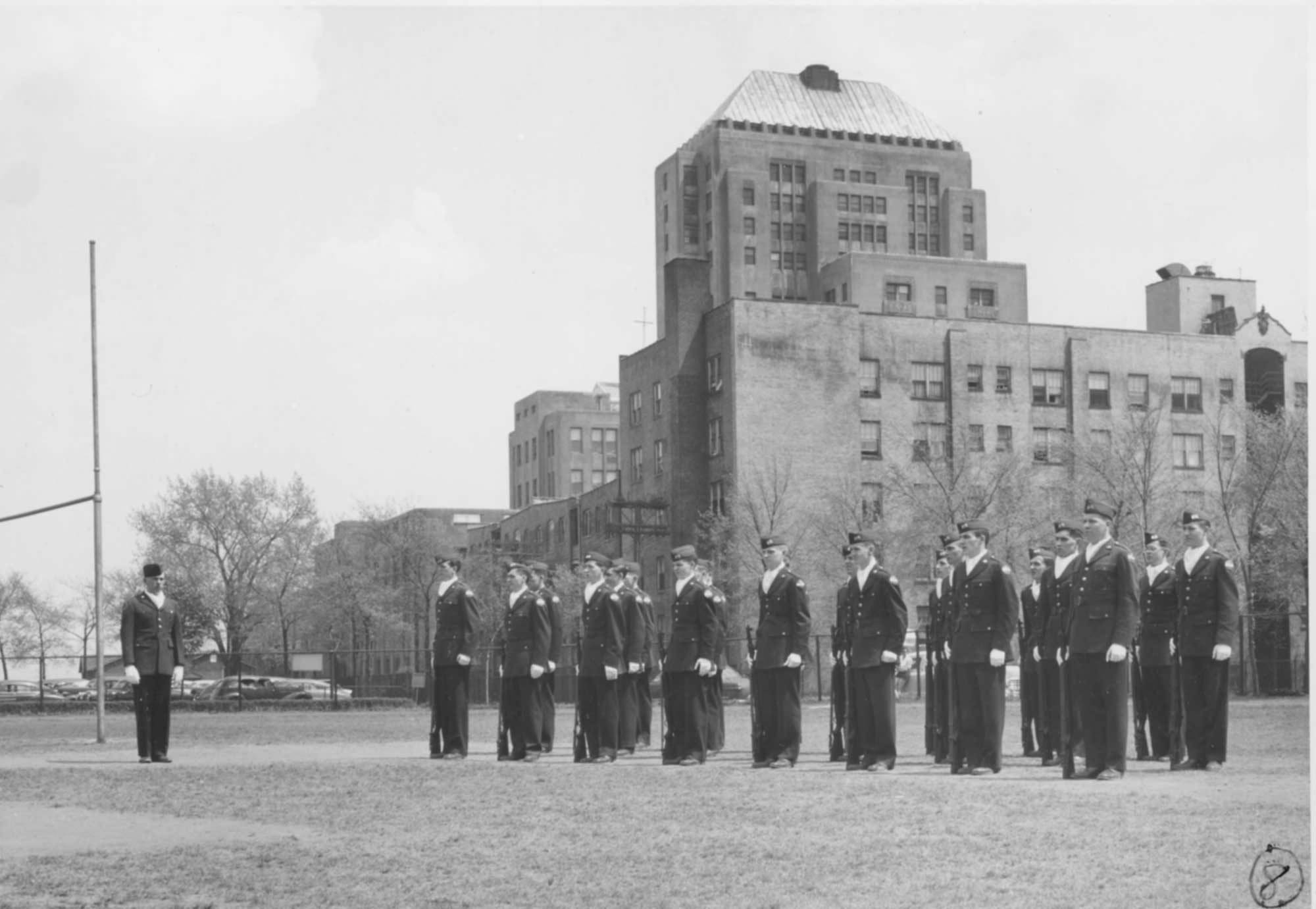
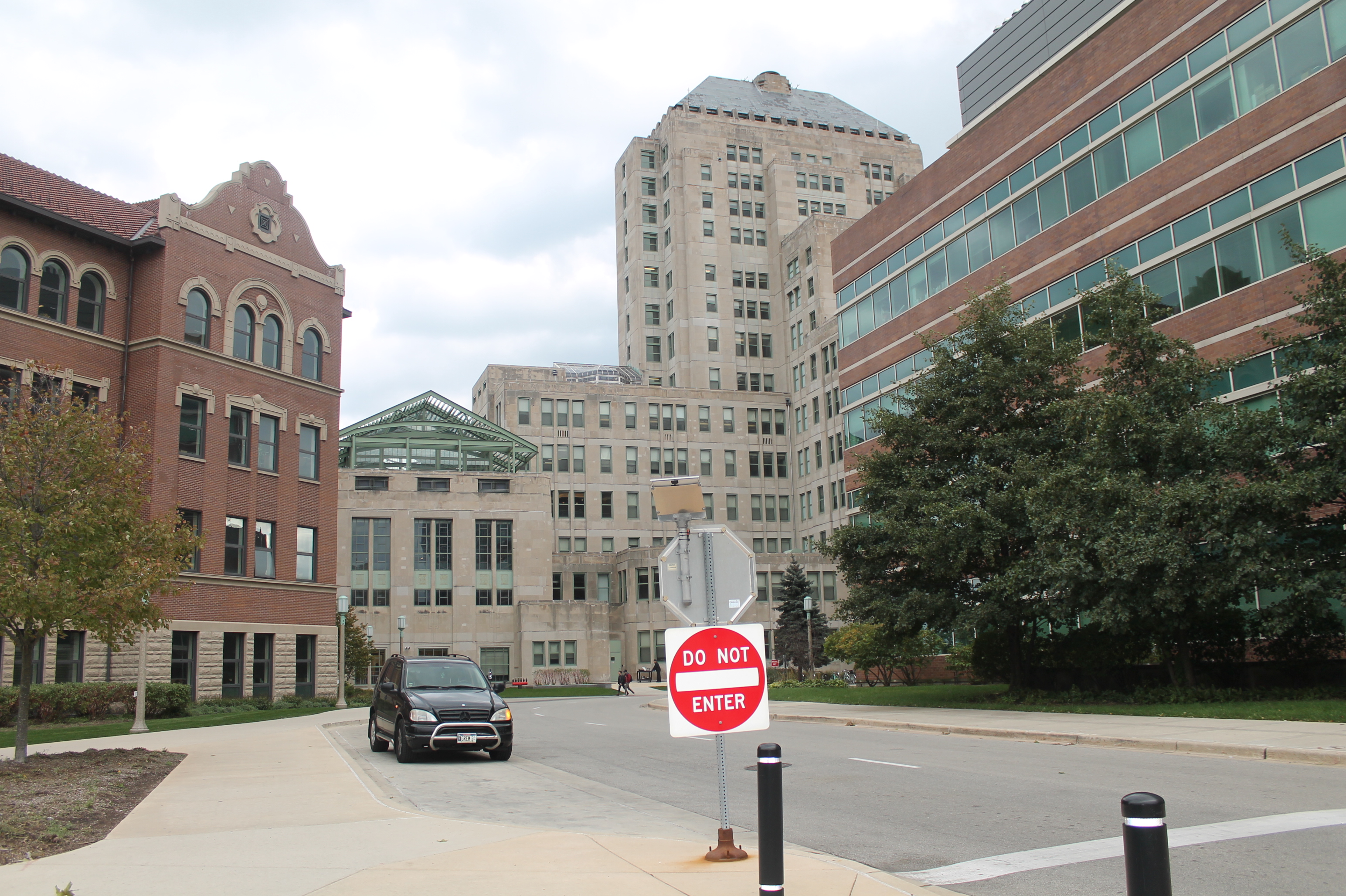
Members of the Loyola ROTC out for a drill in the 1950s. [29]
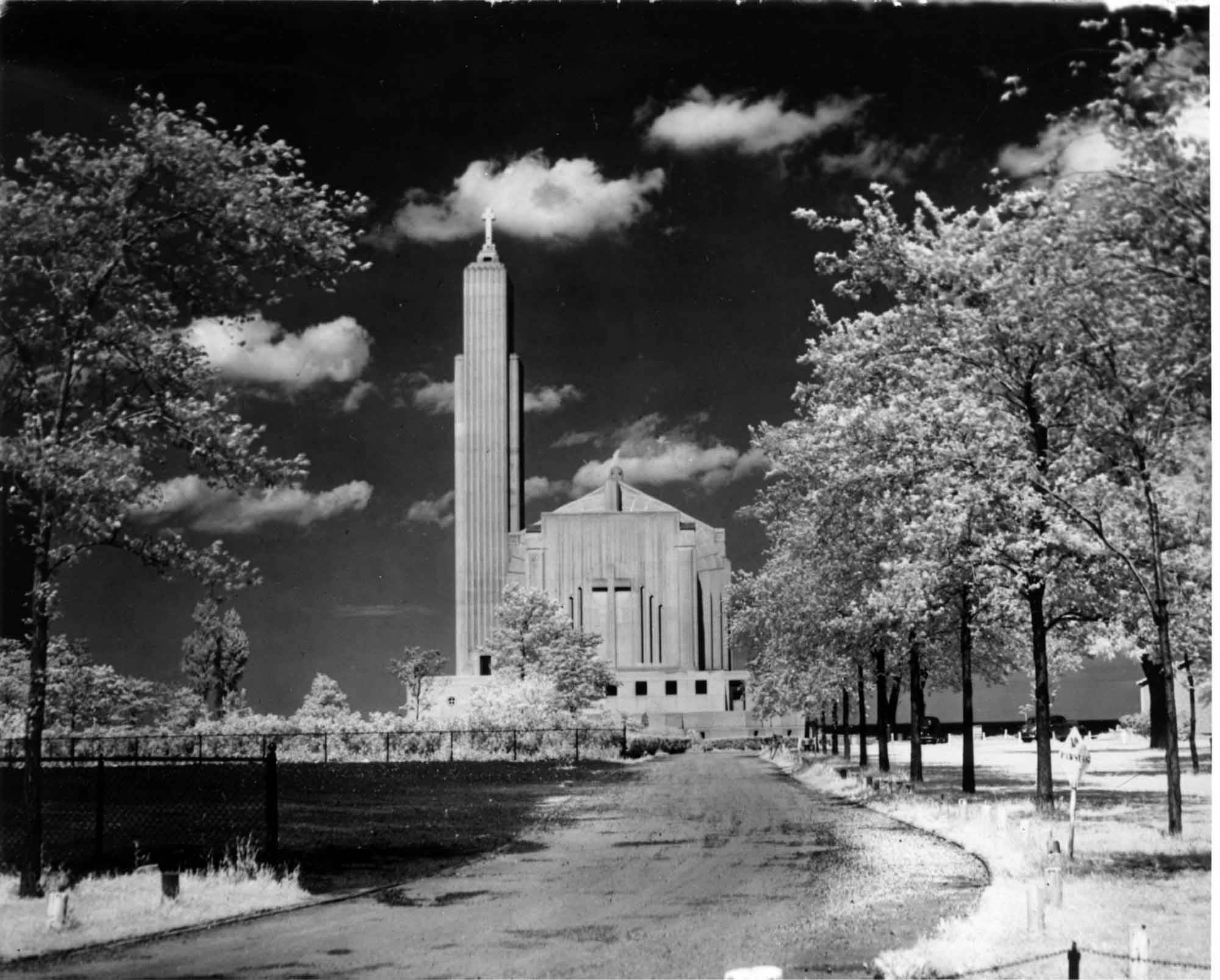

A view of Madonna della Strada before any buildings were placed in the photographer’s standing position (Damen Hall, followed by Cuneo Hall). The boathouse by the lake can be seen on the right. [30]
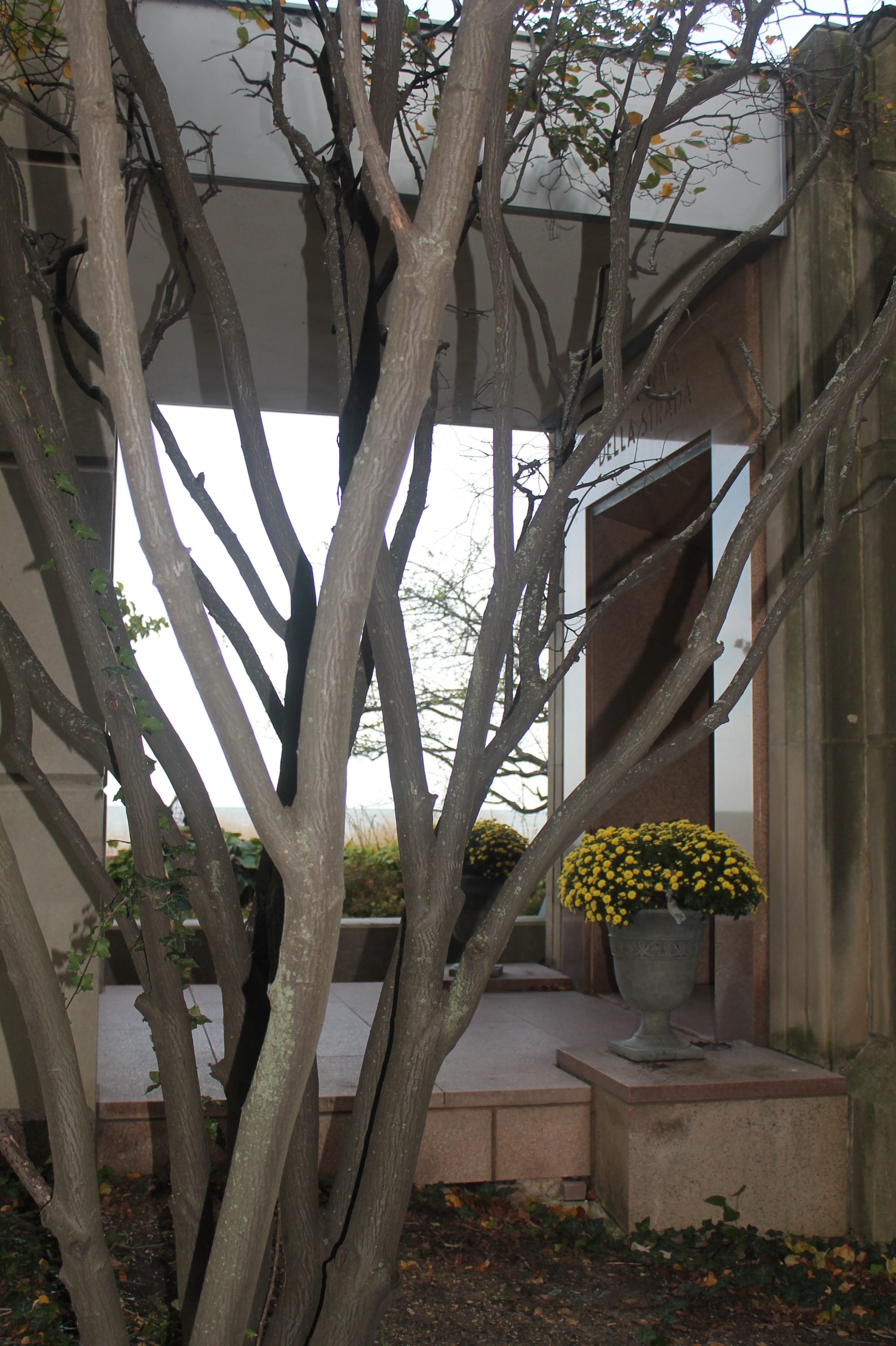
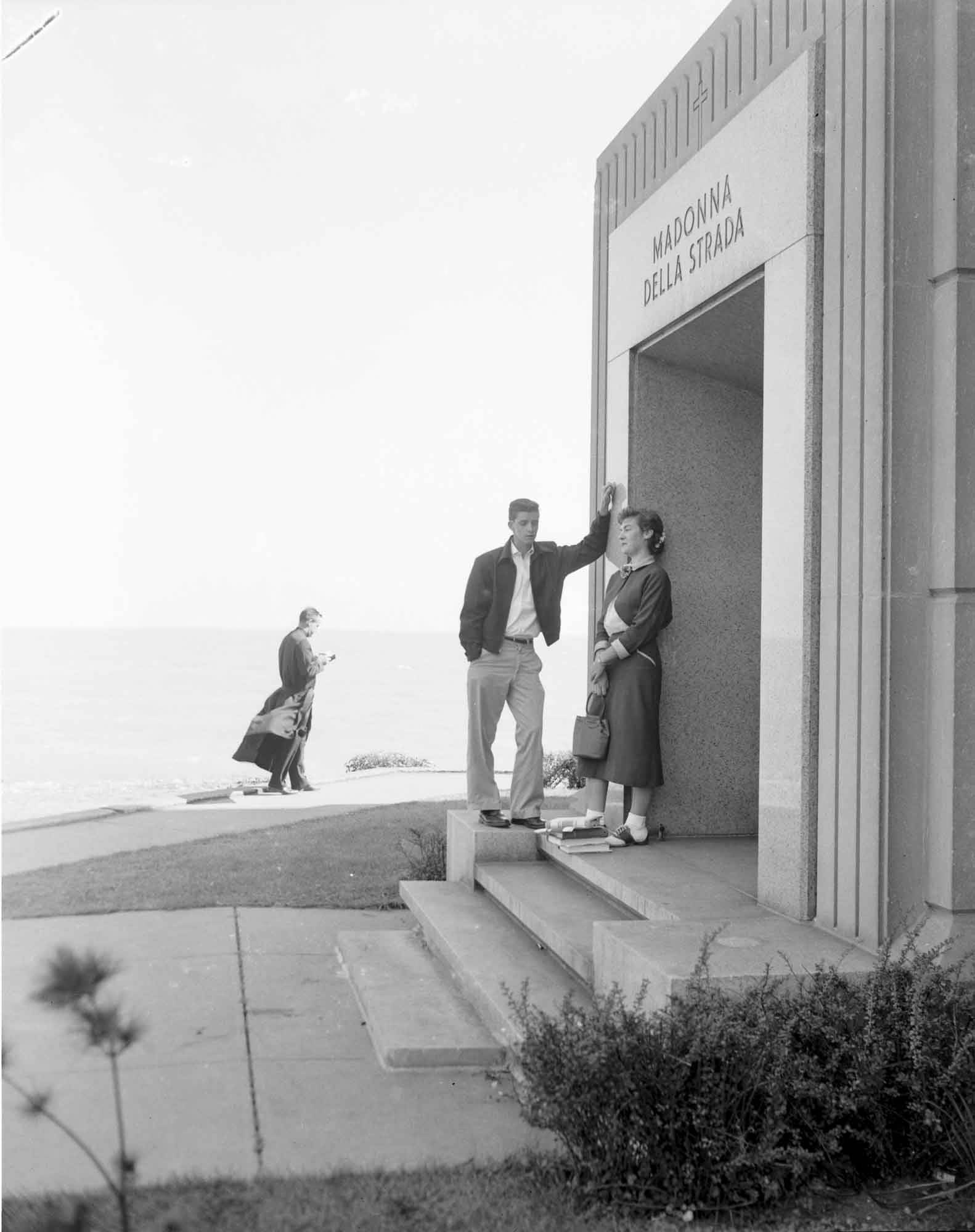
A pair of students relax by the chapel entrance in the 1950s. [31]

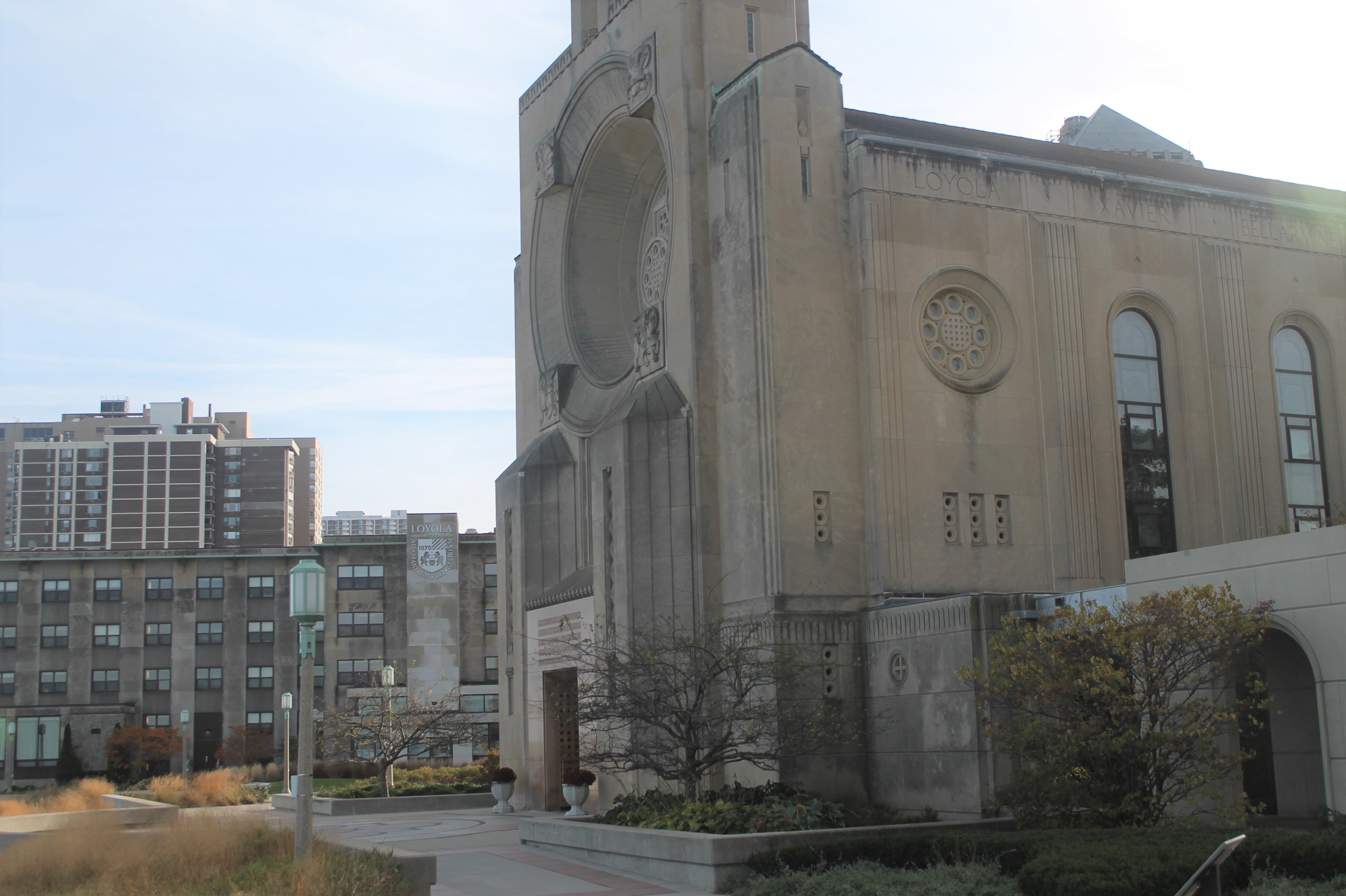
The entrance of Madonna della Strada at the 1957 Baccalaureate Mass. Note the sandbar that the photographer is standing on, which no longer remains today. [32]


The south side view of Madonna della Strada shows Cudahy Library in the background, now shadowed by the Information Commons. The sea wall has also been constructed closer to the inside of campus. [33]
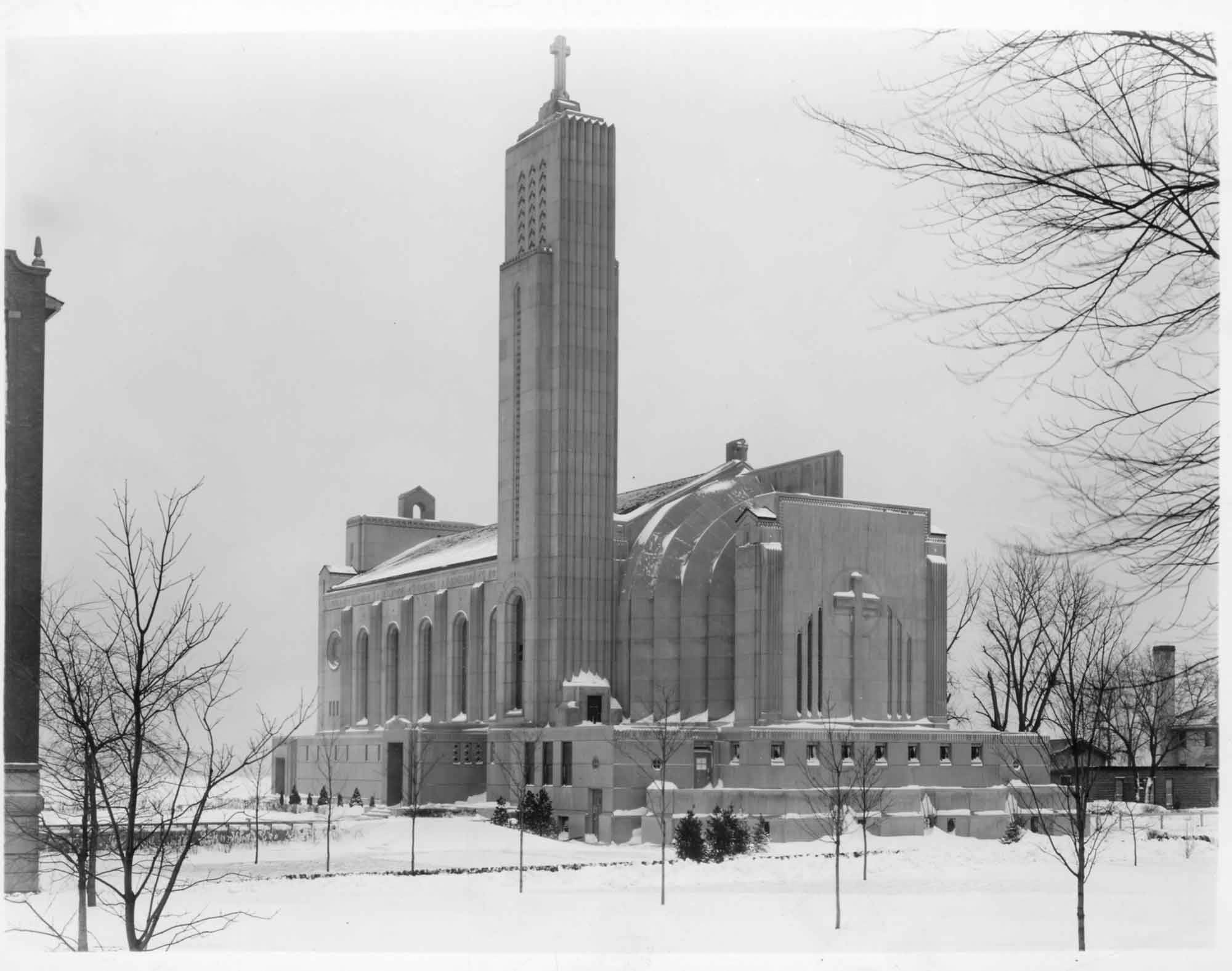

A view of Madonna della Strada with newly planted trees. The date of the photograph is unknown. [34]
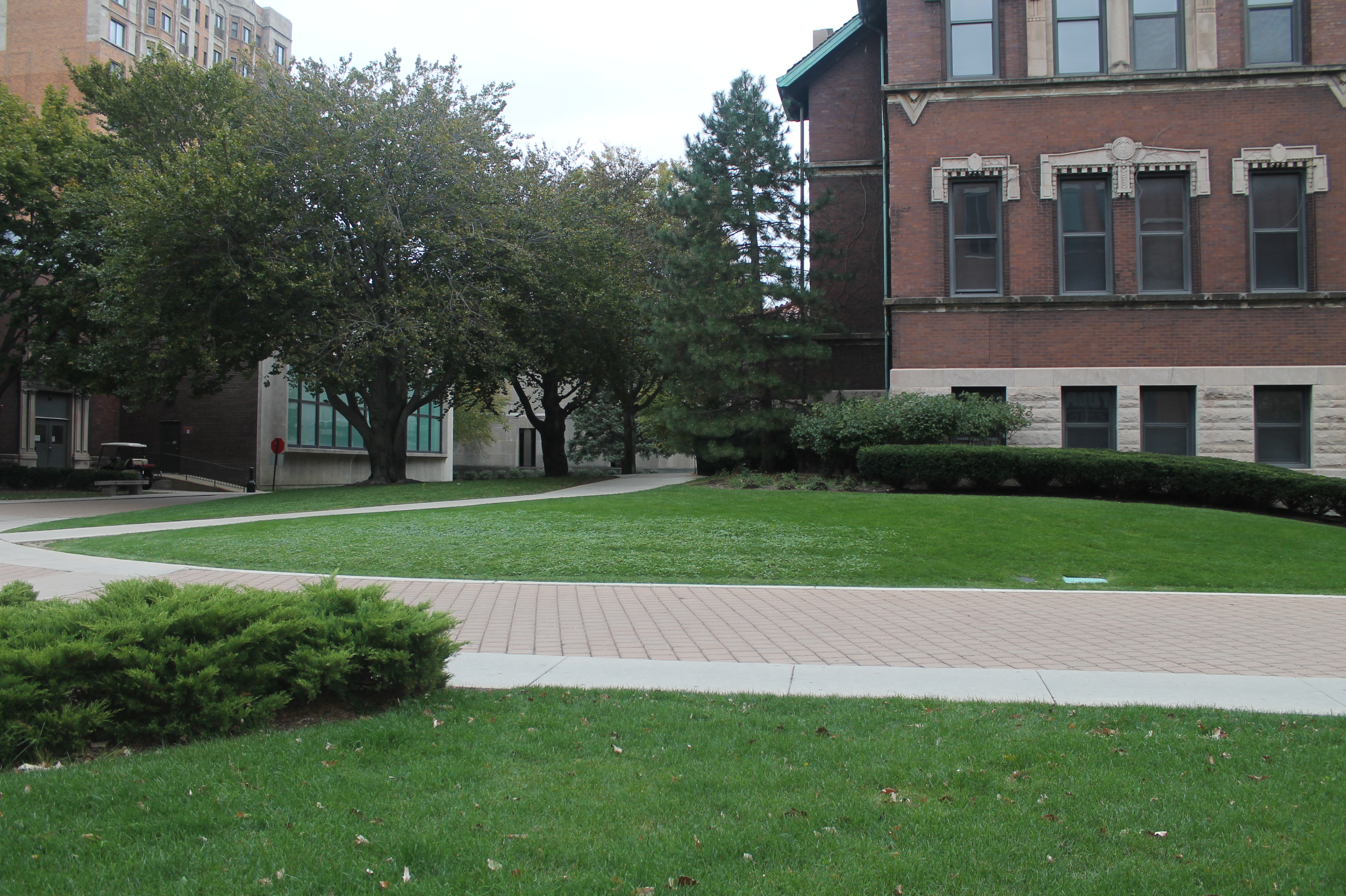
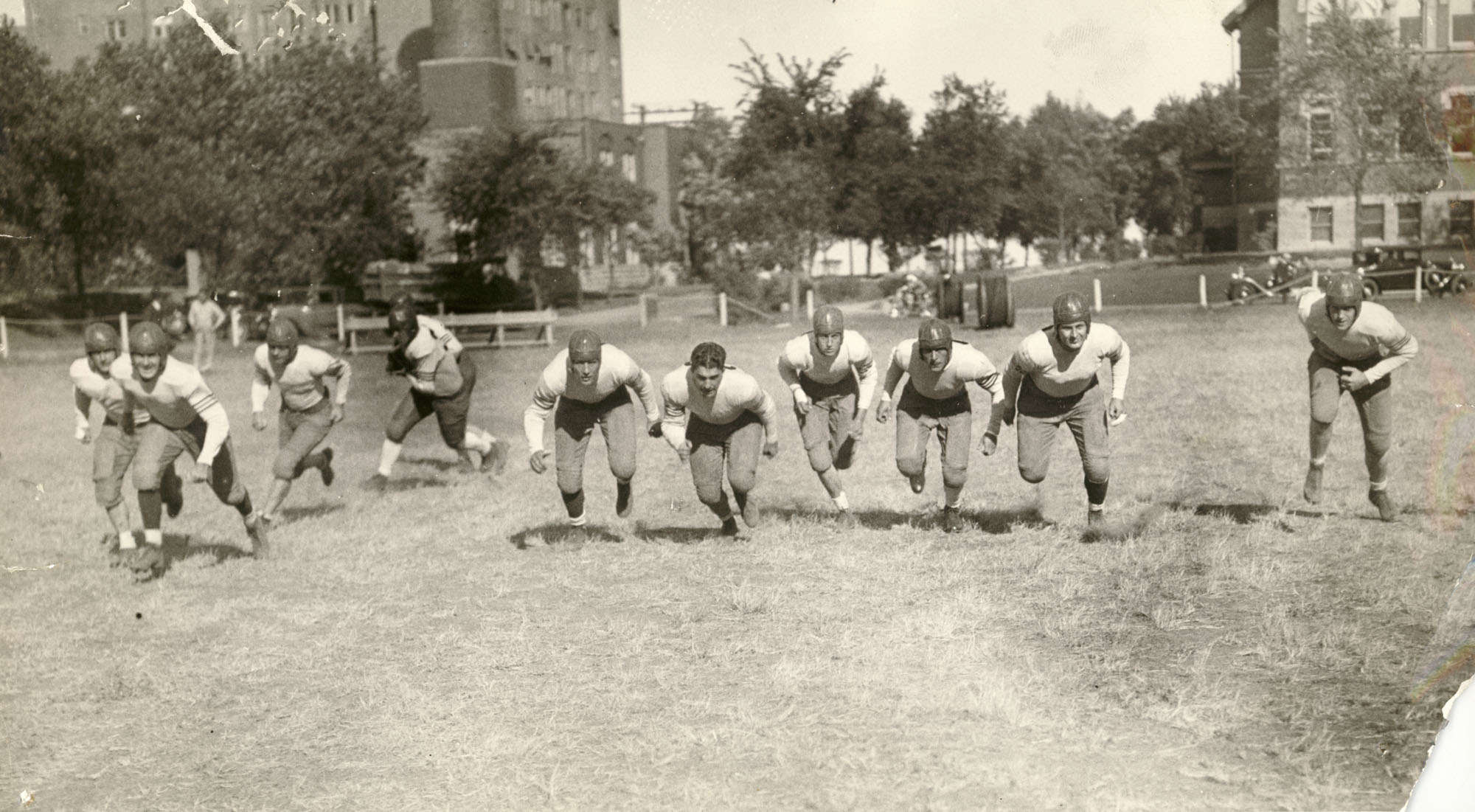
Here are football players on the field behind Dumbach Hall. This photo dates back circa 1929. The photographer stood on the current site of the Norville Center for Intercollegiate Athletics. [35]
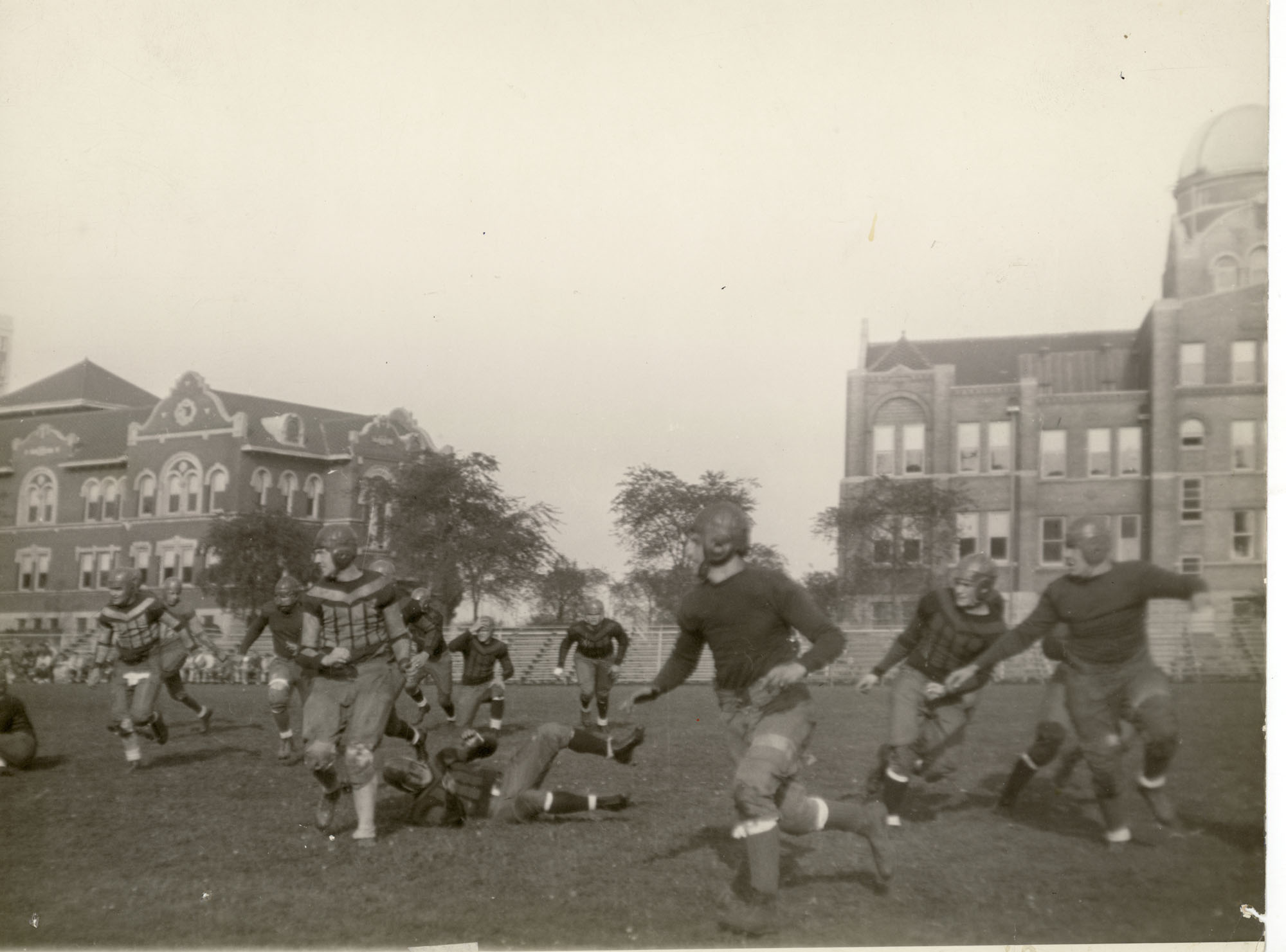
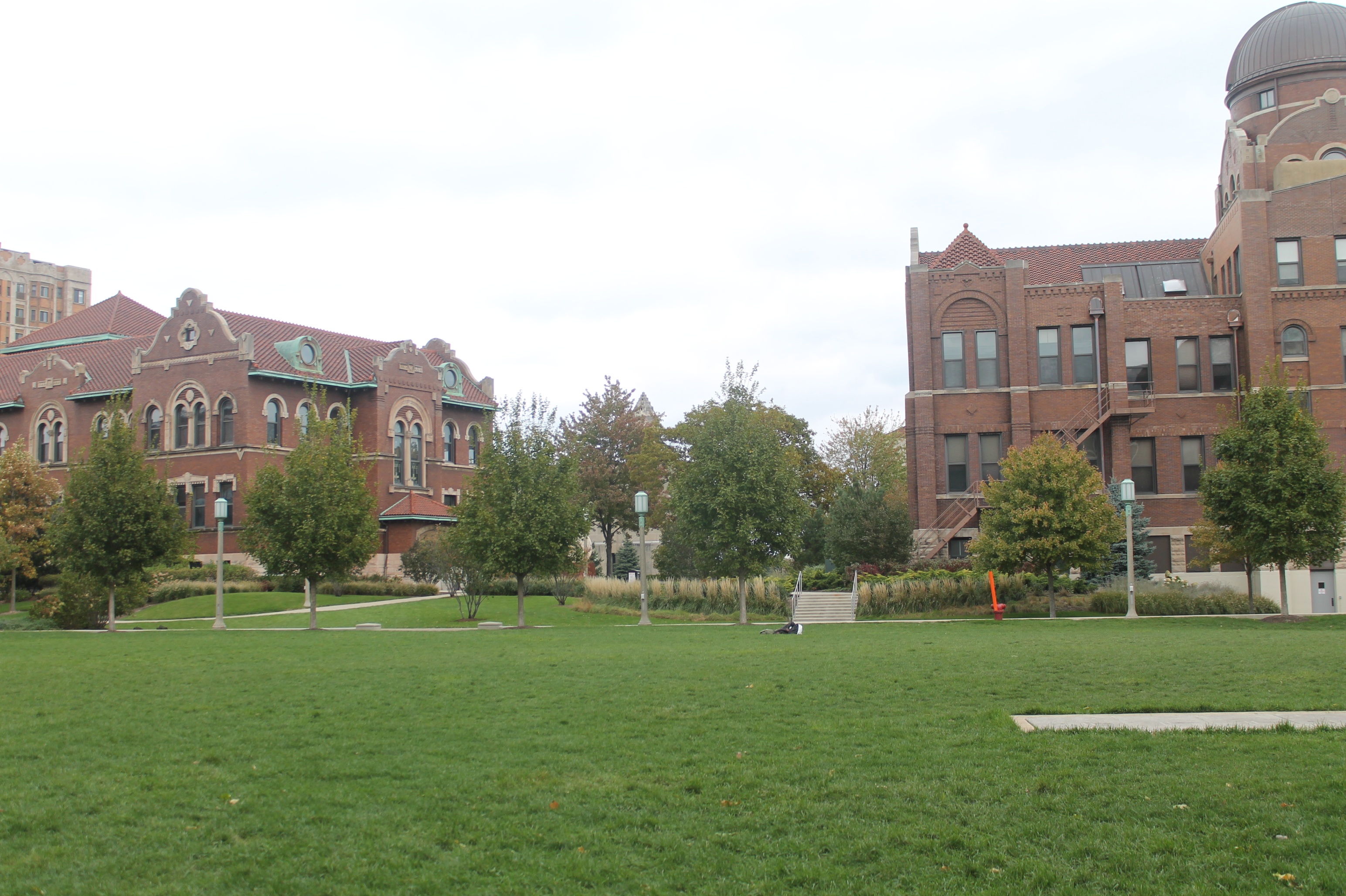
More football players running in the field behind Cudahy Science Hall, circa 1928. Notice the bleachers behind them. The West Quad is in the site of this former field. [36]


A pile-up of football players on the football field on the west side of campus in 1929. [37]
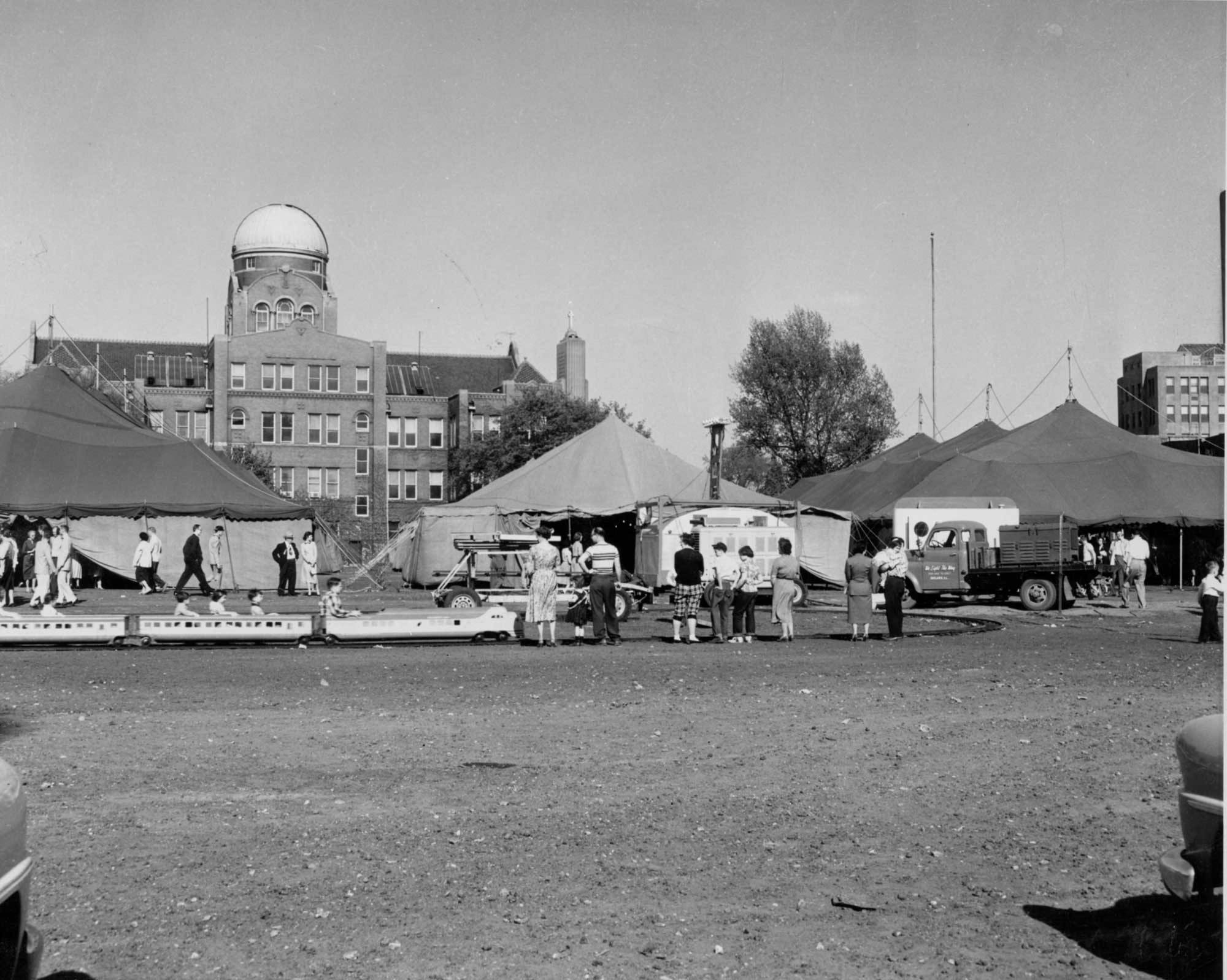
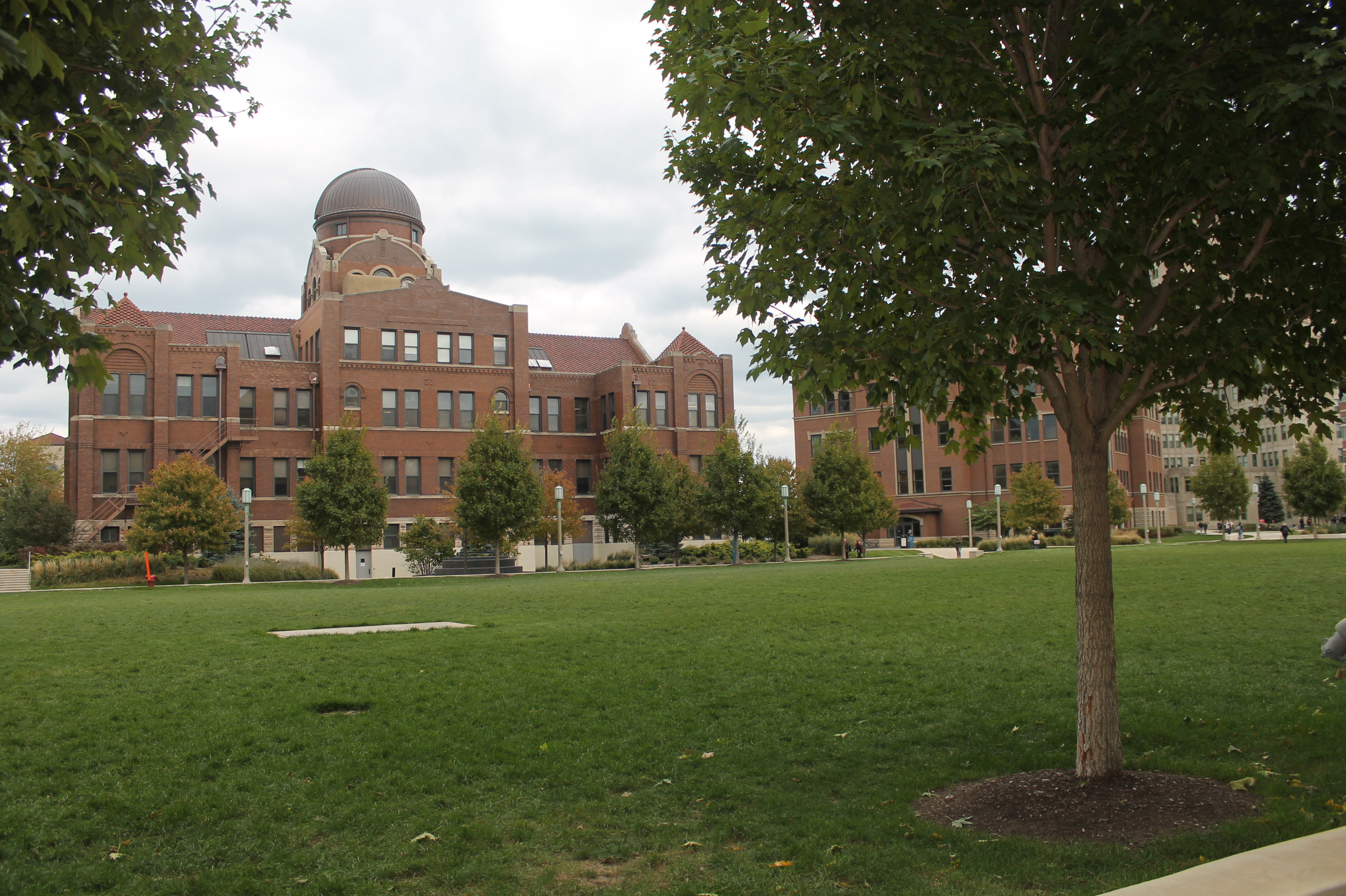
The Loyola Fair was an annual event for students during the 1950s and 1960s. Here is the fair underway in the 1950s. [38]
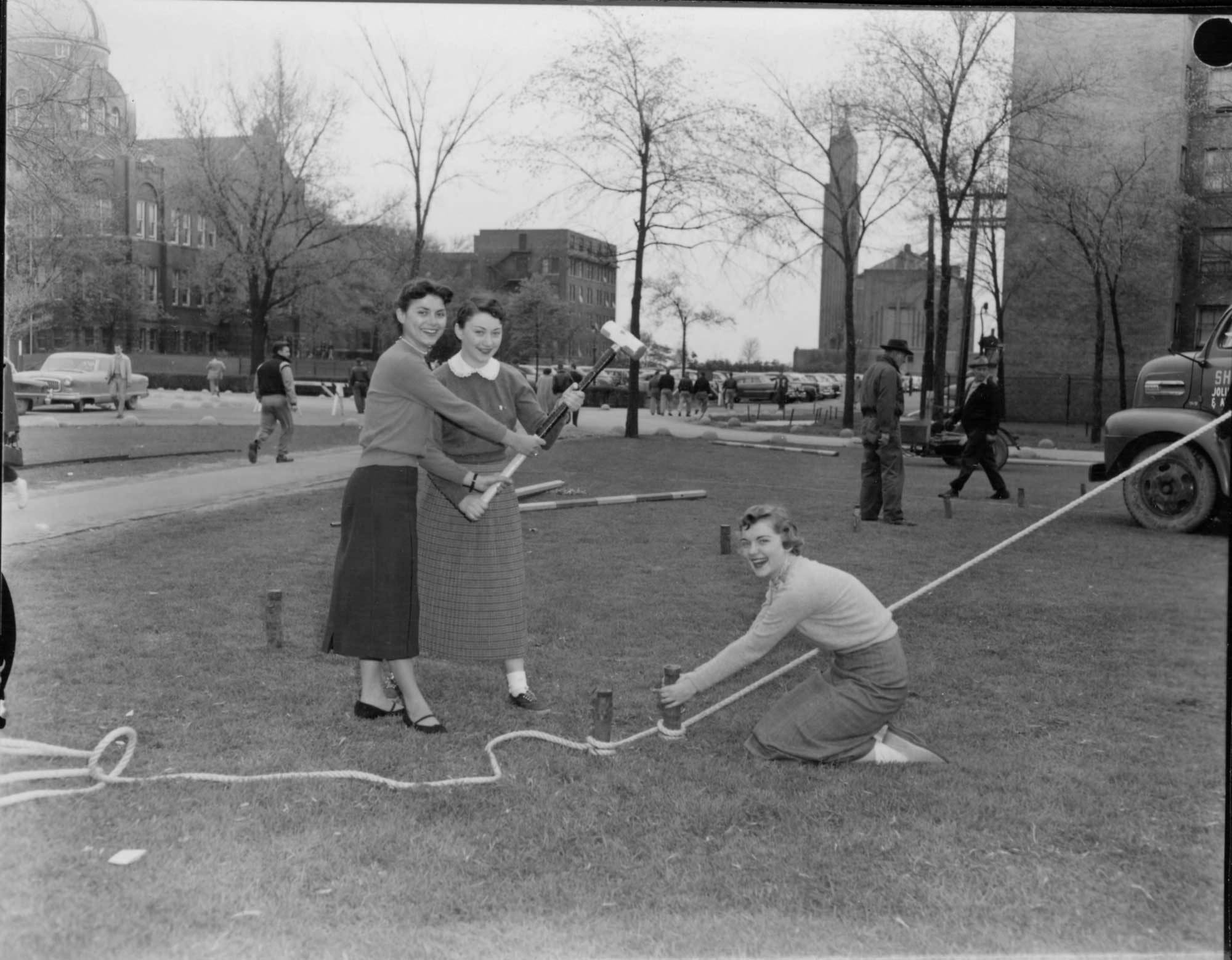
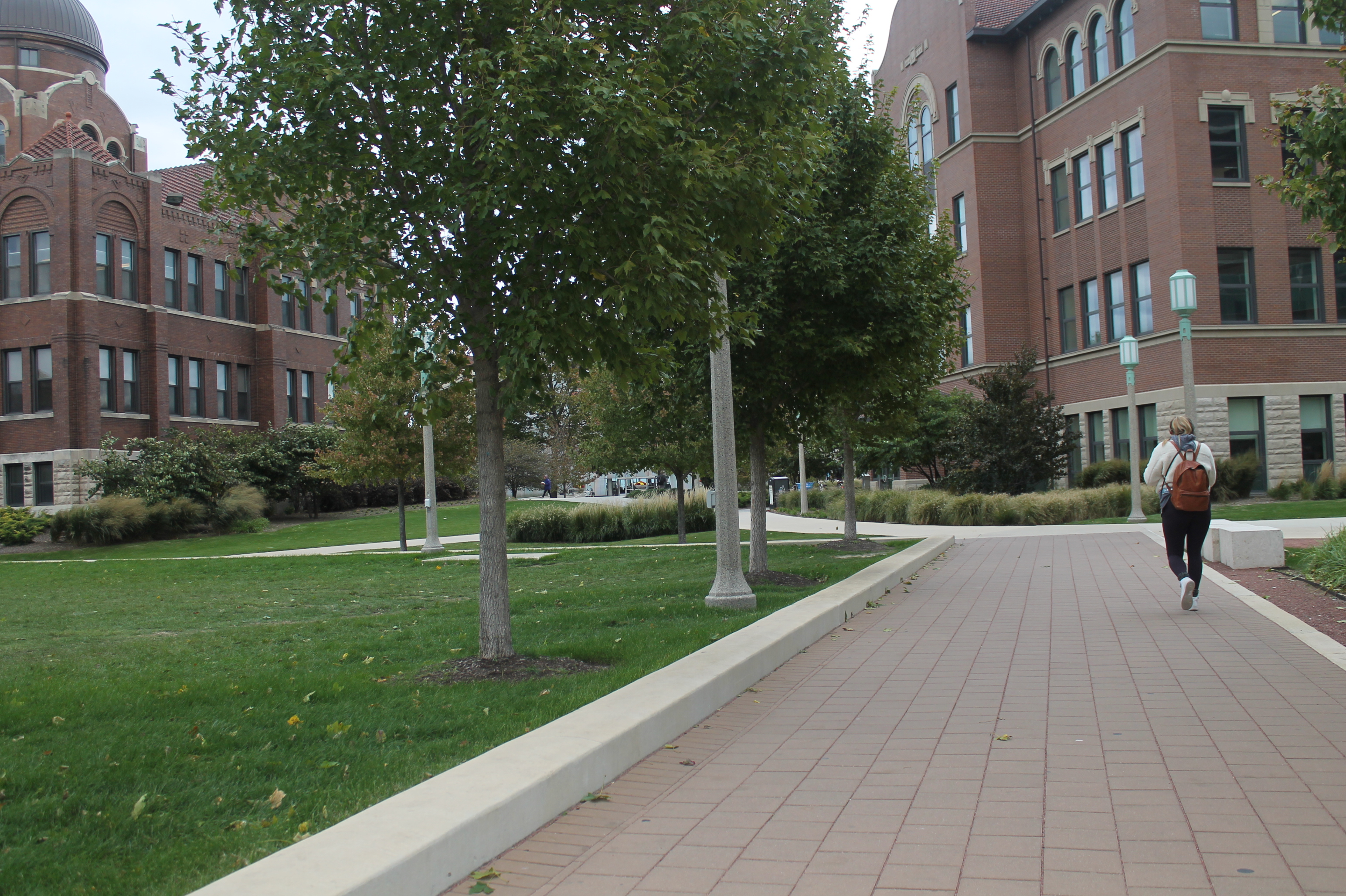
A group of women help set up for the Loyola Fair. [39]
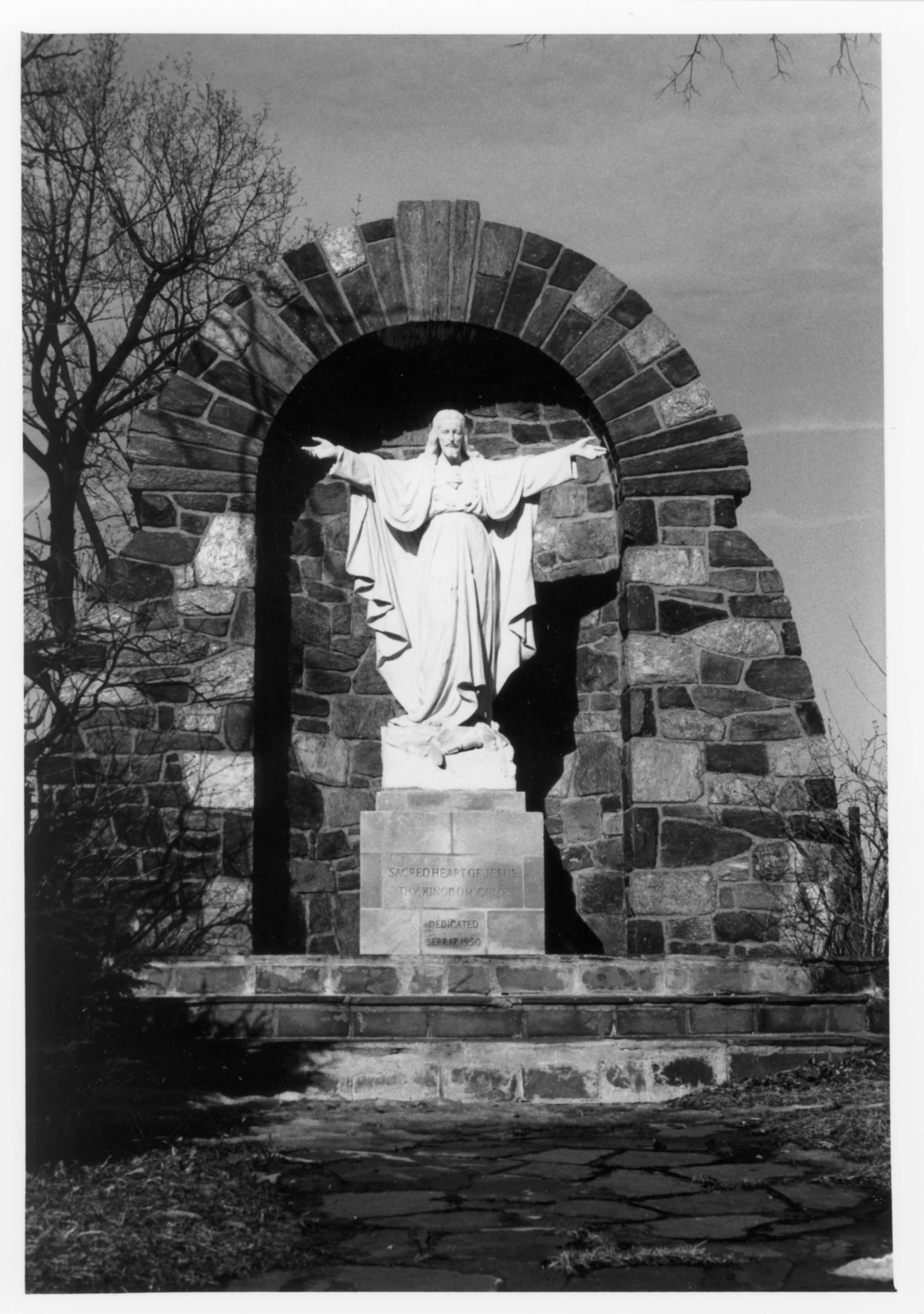

The Sacred Heart Shrine, dedicated in 1950, sits on the southeastern side of Piper Hall on Sheridan Road. [40]
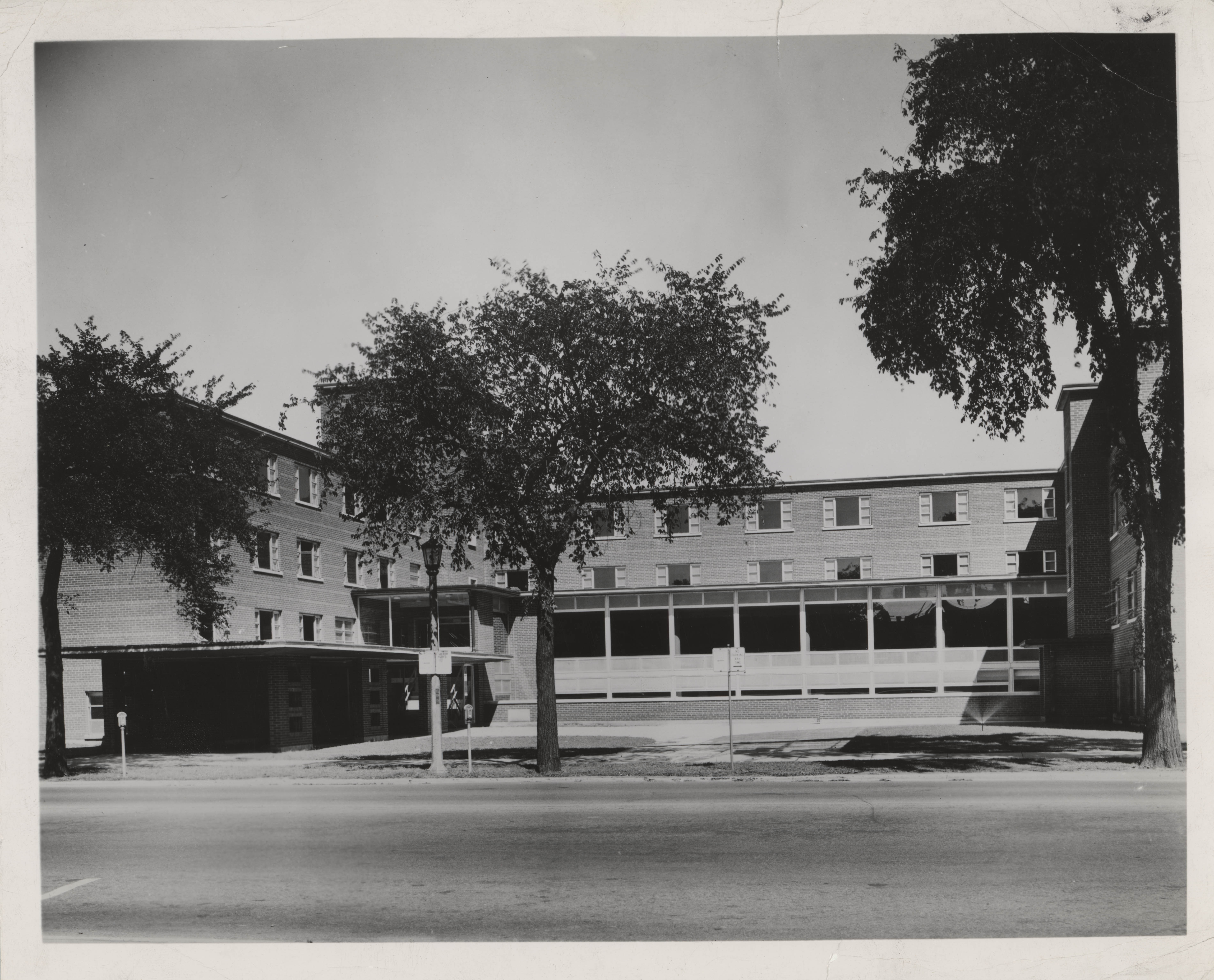

A view of Campion Hall, date unknown. The residence hall now houses Loyola’s Honors Program freshmen. [41]
